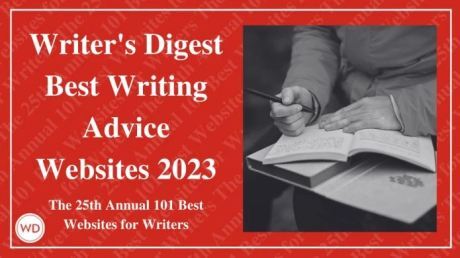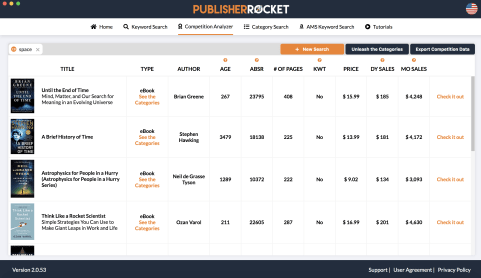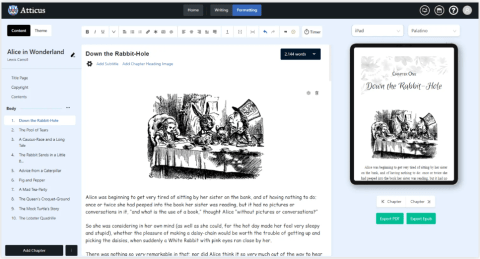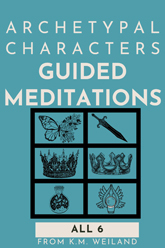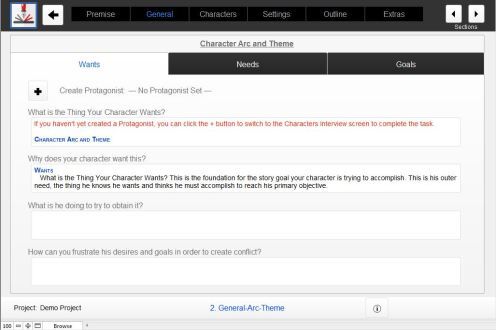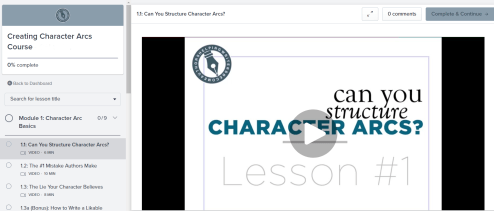K.M. Weiland's Blog, page 10
January 29, 2024
5 Reasons Marketing Is Hard for Writers
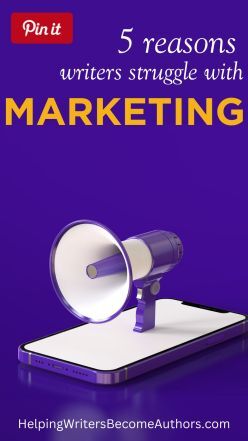 Say the word “marketing” to a group of writers, and you’re likely to elicit a groan. Almost anyone with dreams of seeing a book in print can relate to the deflation experienced when it becomes clear that simply writing an excellent book isn’t enough to sell any notable number of copies. Sooner or later, any writer committed to publishing and selling a book will have to accept that learning how to market the book is just as important, if not more, to the book’s success than the book itself. This is often a frustrating experience since, in general, marketing is hard for writers.
Say the word “marketing” to a group of writers, and you’re likely to elicit a groan. Almost anyone with dreams of seeing a book in print can relate to the deflation experienced when it becomes clear that simply writing an excellent book isn’t enough to sell any notable number of copies. Sooner or later, any writer committed to publishing and selling a book will have to accept that learning how to market the book is just as important, if not more, to the book’s success than the book itself. This is often a frustrating experience since, in general, marketing is hard for writers.
Why is this? After posting last month about how my own approach to marketing has evolved over the last sixteen years, I started thinking about why it is that marketing is almost universally deplored by writers. Although some writers are, of course, exceptions, most writers hate the idea of marketing.
Here you’ve just done this incredibly monumental thing of learning all the complex and high-level skills involved in writing a book, only to be told you’re basically back to ground zero. Now you have to start all over and learn the equally complex and high-level skills of marketing a book. The difference is that most of us learned the art of fiction because we loved the process; few of us are equally attracted to learning the art of marketing.
Now, some writers may be perfectly clear that they are writing for reasons that do not require marketing. Perhaps they are writing a story for their grandchildren or a memoir for purely personal reasons, and it doesn’t matter much if they sell more than ten copies, if any. That approach is 100% legit. I am always a stand for getting clear with yourself about your own motives for writing and your own personal definition of success.
But most writers want to be published. More than that, most writers dream of making good money off their books, maybe even writing full-time. That’s also legit. But the dash of cold water is that this dream will not happen without the ability to market your book. Doesn’t matter if your intention is to publish traditionally or independently. Either way, more than half the job of being a successful writer is marketing.
I’m sometimes asked if I think a writer needs to go to college to get a degree in Literature or an MFA. My response (as someone for whom college wasn’t an option, so take this in light of its obvious bias) has always been, “No, you can learn everything you need to know about writing a book via the multitude of resources that are available online.” However, in recent years, I would amend that answer to suggest that, instead, if a person is serious about a writing career, they would do well to pursue a degree, or at least classes, in marketing or business. If I had it to do over again, that’s what I would do.
I say that to emphasize the sheer importance of marketing and business savvy as the leverage point to transforming writing into a viable and profitable career. If it sounds sobering, that’s because it is. However, it is also important to know that, just as the incredibly complex skill of writing a book can be learned by anyone with the initiative and discipline to study and practice, so too can the equally complex skill of marketing a book or creating a business around your writing be learned by anyone. The resources are literally at our fingertips. All that is required is the willingness to move past the initial (and often substantial) resistance that many of us feel and to begin putting in the work. After a while, marketing can turn out to be just as much a creative pursuit as writing.
5 Reasons Marketing Is Hard for Writers—and How to Change Your MindsetOne of the most effective ways to move past limiting beliefs—such as “marketing is too hard” or “I’m a writer, not a marketer”—is to recognize those beliefs as such. In today’s post, I want to explore some of the reasons I believe marketing is hard for writers (at least in the beginning), and how writers need to flip their mindsets in order to embrace marketing and business as tremendous opportunities.
To my mind, the reasons marketing is hard for writers generally come down to two factors:
1. Writers don’t usually start out with any marketing skills.
The belief that “I’m a writer, not a marketer” is 100% true in the beginning. And in the immortal words of Carmine Falcone, “Ya always fear what ya don’t understand.”
2. Writers fail to recognize that writing full-time is a business and has to be run as such.
The idea that being a writer means you spend the majority of your time writing is a largely antiquated notion. Being a writer these days isn’t so different from being an entrepreneur.
All of this can seem scary and overwhelming to writers who are already nervous about marketing. The first thing to realize is that’s okay. You feel that way because you’re facing a challenge to expand your growth on a number of levels. Feeling this way is a sign you’re on a positive track that will transform your life.
The second thing to realize is you won’t always feel this way. If you’re truly committed to becoming a successful writer, there is no reason you can’t learn everything you need to know about how to market and sell your books. All it takes is the willingness to learn, put in the time and the effort, make mistakes, try again, and nurture your own experience as you go.
To get you started, here are five mindsets to balance out the fear that marketing is hard for writers. Just being able to recognize and acknowledge underlying reasons for those fears can help you move through them to the tremendous opportunities and rewards available on the other side.
1. Realize Writing and Marketing Are Different Areas of ExpertiseMarketing is a field all its own. One of the reasons writers initially struggle with marketing is simply that writing and marketing are entirely different experiences. Being a writer is an entirely different identity from being a marketer. In many ways, the two can seem completely opposite. If nothing else, writing is a personal and introverted task, while marketing is a public and extroverted task.
Completing the feat of learning how to write a book is a mountaintop experience that can often lead writers to exhale in relief. You’ve done it! You’ve reached completion. But the journey isn’t over. No one will ever read a book unless they know about it. The simple fact that a great book exists will not draw readers. The only way to attract readers (and sales) is to embrace the next mountain. Beliefs that you shouldn’t have to learn both skills or that simply writing a book should be “enough” are counter-productive and will only hold you back.
All of that said, it’s also useful to recognize that despite all their differences, writing and marketing also share common ground. Both are, in fact, deeply creative and inventive acts, requiring keen awareness of self and others and an instinctive sensitivity and intuition about what works. Viewing marketing as an expression of creativity can help bridge what sometimes seems an insurmountable wall between marketing and writing.
2. Embrace Marketing as a High-Level Set of SkillsMarketing is an art form. It’s not just the fries added on to your burger combo meal. Just like writing, marketing is a full ten-course meal all unto itself. To truly thrive at marketing—and to truly appreciate the experience of marketing—writers must recognize that marketing represents a high-level skillset. Successful marketing requires respect for those skills.
It’s no different from writing a book: although formulae can be followed (and often are in the beginning when the person is still learning), the true magic doesn’t happen until the person grasps the deeper theory and applies those principles in a way that arises from their own unique creativity and intuition.
By all means, learn the marketing formulae. Pay attention when marketing gurus tell you to start a mailing list, run promos, buy ads, etc. But don’t treat it as a checklist. Like writing itself, marketing requires more respect and love than that. It requires not just a commitment to learning what to do but also to understanding why.
It’s true marketing is not easy. This is often what trips writers up. But just remember this: writing isn’t easy either. If one is worth mastering, so is the other.
3. Commit to Gaining the Three E’s: Education, Experience, and ExpertiseMarketing is a commitment. It is a commitment to yourself, to the book you have so proudly created, to your belief in the importance of putting that book out into the world where it can be read, and to your own continuing growth. If you have written a book that is ready to be published, then it is not “unfair” that you now have to market it. Marketing is the natural next step on your adventure. It is an inherent part of the experience. To spend years on your literary masterpiece only to expect to knock out the necessary marketing in a weekend is not only unrealistic, it is also disrespectful to your larger dream for that book.
The only way to become a successful marketer is to commit to putting in the time and the work. This requires the cultivation of the “three e’s”: education, experience, and expertise.
Educate yourself about marketing. And I mean go deep. Sign up for e-letters and blogs written by fellow authors who offer marketing advice (such as The Creative Penn, David Gaughran, and Kindlepreneur), but don’t stop there. Studying marketing itself. Study copywriting. Study advertising. Study social media. Study web design. Study graphic design. You don’t have to study all of these right away or to the same depth. But go beyond the advice of the writing world to study marketing from within its own field. Just as writing is a life-long study and practice, so is marketing.
Learn from your own experiences. The most valuable lessons I have gleaned about marketing have been through my own trial and error. Take what you’re learning and apply it. See what results you get. See how people respond. See how you respond. Find out what approaches light up your creativity versus those that make you feel icky or dead inside. Marketing techniques evolve more quickly than ever these days, so it’s important not to get stuck in ruts. Stay curious. You may even find that marketing becomes as enjoyable a creative pursuit as writing itself.
Finally, cultivate expertise. Take pride in your marketing, just as you do your writing. You are a marketer now, so you might as well be the best you can possibly be.
4. Start Thinking of Yourself as a Businessperson as Well as a WriterMarketing is a business. If you’re now a marketer, then you’re also a businessperson. If you’re writing for money and particularly if it is your career or you want it to be, then writing is your business. This means moving beyond the starving artist trope to learn the technicalities and legalities of setting yourself up for financial success.
At the least, this might mean creating a professional website and mailing list. It might also mean hiring an accountant or incorporating as an LLC. It means budgeting and setting up retirement funds and paying for your own insurance and learning how to file taxes on royalties or as a self-employed entity.
As a writer, your top priority is your art. But as a businessperson, the bottom line is money. If you’re writing full-time, this means all your resources are dependent on your writing, which means practical concerns must enter in to your decisions, both about what you write and also about how you market and sell your creations.
I’ll be straight with you: marketing gets a whole lot more appealing right about the time you realize it’s what puts bread on your table.
5. Accept That Running a Business Requires As Much or More Time and Commitment Than Writing a BookMarketing is a job. “Full-time writer” evokes idyllic images of spending one’s days scribbling away in a book-lined study, only occasionally emerging for crumpets and tea. Perhaps this was true enough a century or two ago, but for the vast majority of modern midlist or indie authors this is not the whole picture. If you’re a full-time writer, then the act of writing is only a small part of your professional responsibilities.
Last year when I talked about what my daily schedule looks like, quite a few people were surprised at how little time I spent writing. And it’s true. Half or more of my time is spent on tasks other than actively writing. I might be answering emails, maintaining or updating my website, or posting to social media. Or I might be working on other aspects of content creation necessary to get the writing out there—editing a blog post, recording a podcast, typesetting a book, researching, working with a cover designer, negotiating for foreign rights, doing monthly accounting, planning new projects, writing up a weekly schedule, etc.
Being a full-time writer can be idyllic. To the degree you are successful, you have the opportunity to set your own schedule, work from home, and control all the most important decisions about your work and your life. But as any entrepreneur or self-employed person can tell you, the idea that you will end up working fewer hours than someone in a corporate job (especially when you’re starting out) is laughable. There are so many other tasks involved with the business of writing than just the writing, some of which are mind-numbing, but many of which are great fun in their own right.
***
Ultimately, I think the main reason marketing is hard for writers is simply the result of their either not understanding the big picture of what it takes to live successfully as a full-time author or a “magical thinking” that is in resistance to those facts. There is no magic carpet that will take even the best-written book to bestseller status. There is only the opportunity, available to all of us, to roll up our sleeves and get to work.
Making the business of writing your career is a grand way to spend your life. I have no regrets or complaints. Indeed, I feel incredibly blessed and lucky. But it’s not a fairy tale. It’s a job, and just like any job, the best way to get ahead is simply to put your head down and do the work.
If you ever feel resistant to the idea of marketing, see if you can go a little deeper and examine your own reasons behind this resistance. What you find may simply be a general sense of bewilderment at not knowing how to market. The good news is that’s where everyone starts. From there, the possibilities of what you may learn and where you may go are limitless.
Wordplayers, tell me your opinions! Why do you think marketing is hard for writers? Tell me in the comments!Click the “Play” button to Listen to Audio Version (or subscribe to the Helping Writers Become Authors podcast in Apple Podcast or Amazon Music).
___
Love Helping Writers Become Authors? You can now become a patron. (Huge thanks to those of you who are already part of my Patreon family!)The post 5 Reasons Marketing Is Hard for Writers appeared first on Helping Writers Become Authors.
January 22, 2024
Writing Multiple Plotlines: Everything You Need to Know
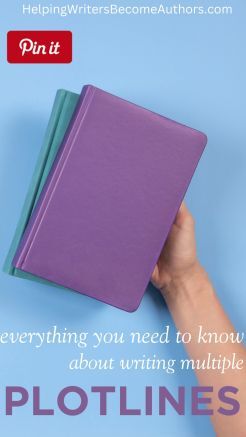 Note From KMW: Hello and welcome to today’s post, in which I am trying something a bit different! Chances are you have either written or considered writing multiple plotlines in a story. These versatile and multi-faceted stories are all the rage (they always were—just ask Dickens!). But adding complexity to what is already the wonderfully complex challenge of writing one plot ups the stakes on every part of the writing process.
Note From KMW: Hello and welcome to today’s post, in which I am trying something a bit different! Chances are you have either written or considered writing multiple plotlines in a story. These versatile and multi-faceted stories are all the rage (they always were—just ask Dickens!). But adding complexity to what is already the wonderfully complex challenge of writing one plot ups the stakes on every part of the writing process.
This post is a transcript of a video I posted on YouTube. If you’re a subscriber on YouTube, then you probably know that throughout the last year, I consistently posted shorter videos in a Q&A format. As the year progressed, those videos started getting longer (true to form for me) and just taking more time than I really had available if I wanted to continue working on the other content I produce as well. But I really wanted to continue doing the videos.
So this year, I’m going to do something slightly different, and that is offering the videos not just on YouTube but here on the blog and on my podcast. You may already be able to tell this is a different experience, since this is more extemporaneous with me just talking. So who knows what I’m going to say!
Don’t worry, the regular format for both the blog and the podcast will be back next week. I am planning to post one of these videos once a month throughout the year, because I enjoy doing the video format and also as an experiment to see what people resonate with and what you like.
If you are a regular blog reader and/or podcast listener, then the only real difference you’ll notice is that, as I say, it’s more extemporaneous and not scripted. If you are a YouTube watcher, then the good news is this format means I will be including a transcript (which you’re reading now). You have some format options to access the information I share in my videos.
Writing Multiple PlotlinesToday we’re going to be diving into the topic of multiple plotlines. This is in response to a question that I received on the blog from Amanda who asks:
I would love a practical guide to outlining multiple storylines. Even if you just have a B story, how do you outline for it and make sure it aligns with the main story?
This is an important question. So often, as authors, we think—particularly when we look at some of what’s popular right now—that we need to have multiple plotlines. We think we need to go bigger and better and have more and more and more. And that’s great. Obviously, there’s a lot of fun in that and a lot of ways we can explore fictional options through that approach. But the key is it has to all work together. Just throwing a bunch of plotlines into the same story world doesn’t necessarily mean they will create the most cohesive or resonant story.
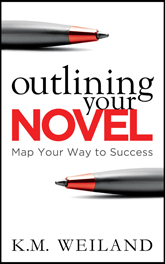
Outlining Your Novel (Amazon affiliate link)
It is great and so important for creating that foundation when writers take time to think about this and ask, “How can I create that kind of resonance in the outline phase or as I’m planning?”
As with most things, the foundation of this all comes down to structure. It’s really about how do you take story structure—the principles of story structure and the major plot points (the First Plot Point, the Midpoint, the Pinch Points, etc.)—and then apply that to something that isn’t just one storyline and still make it seem like something readers can follow and pay attention to and that ultimately makes sense on a deeper level of character arc and thematic resonance.
Types of Multiple PlotlinesThere are several different ways we can find multiple plotlines manifesting within stories.
1. Dual PlotlinesThis is what happens when you have two (or more) concurrent stories happening in the same book. What’s going on in these stories, generally, is that you’re trying to explore different facets of a larger story with the intention of bringing those facets together at some point, either late in that story or late in the series.
If you’re writing just one book, then you’re trying to funnel all the plotlines down to the Climax of that story. But if you’re writing a series, then you may be writing book after book after book in which you’re telling two or more separate stories within each of those books. In the final book—which is book 20 or whatever in your series—then you’re finally pulling together all the plotlines.
This means that throughout what might be a very long series, you will be telling stories that don’t obviously have any connection. Now, readers are going to trust that you are going to bring these separate plotlines together in the end and that they’re going to matter. Obviously, there probably will be some continuity between the plotlines if they’re happening in the same world. Very often, there will be an overarching antagonistic force that the characters are, if not specifically facing in early books, then at least have the general idea of, We’re all going to end up having to deal with this at some point.
A very obvious example of this type of story would be Game of Thrones, in which you have this huge series that is encompassing a whole world with different cultures and different people who have no idea of the existence of the other people and are just kind of following their own little plotlines.

Game of Thrones (2011-19), HBO.
From the beginning, there is this sense that this is all going to funnel into the same conflict. In this case, you have the multifaceted conflict of the “game of thrones” for who is going to ultimately rule Westeros and also the battle against the ice zombies. From the very beginning— from that very first chapter—there is the sense of an overarching antagonist and that overarching threat—of the impending ice Apocalypse— that’s affecting everyone. That grants continuity and cohesiveness to what otherwise is just a bunch of random stories about a bunch of random people.
So that’s one way that you can approach multiple plotlines in a story.
2. Multiple TimelinesAnother approach is multiple timelines. In many ways, this can be the same thing, in that you’re dealing with totally separate stories about totally separate characters who have no idea about the existence of each other.
However often what you’ll see in stories like this is that you will have a character in the modern time who is aware of the character in the historical time and is interested in them for some reason (e.g., they’re researching them or learning something about them that is impacting their life in some way).
Or it could be the characters are the same in both plotlines and both timelines. In this case, you’re telling the story of something that perhaps happened in the character’s childhood and then telling a concurrent story about something that’s happening later in life. You’re allowing those stories to comment upon one another.
3. Multiple POVsA final way to think about multiple plotlines is to approach them through the lens of multiple POVs.
Here, this is not talking about a story in which you have a main POV and then little POVs inserted here and there to give color or to explain things. Rather, this is when you are purposefully using multiple POVs to create simultaneous arcs within the story. This could be because you’re telling one main story concurrently from the protagonist’s point of view and the antagonist’s point of view. Or as is very common in the romance genre when you have both leads featuring an equal amount of screen time within their POV so readers can experience their inner journeys as they’re working toward the same ultimate goal.
How to Approach Multiple POVsAll of the above options can be approached in one of two ways. Either they’re completely separate and feature separate plot structures, or they intertwine to the point that the structural beats in one section affect those in the other section.
1. How to Write Multiple Plotlines With Separate Plot StructuresSo let’s address the first one first. If you’re writing a story, like Game of Thrones, in which the plot of one storyline doesn’t necessarily or immediately have any obvious effect on the plotline in a second story, then you’re dealing with basically two separate stories, and you’ll be structuring them as such.
How to Time the Structural Beats in Multiple Plotlines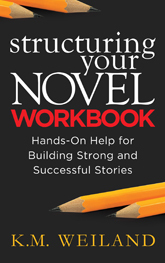
Structuring Your Novel Workbook
This means each plotline needs to have its own set of structural beats. Each plotline within your story will have its own First Plot Point, its own Pinch Points, its own Midpoint, its own Third Plot Point, etc.—until whatever point they begin to intertwine and affect one another, and again if you’re writing a lengthy series, this joining of the two plotlines may be quite late in the series. You may have multiple books that go on and on and on without these stories ever intersecting, in which case, you will have complete story structures for each plotline from book to book to book.
Obviously, that’s complicated. It’s complicated enough to plot one book, much less to do multiple plotlines within the same story. That’s something to consider when you’re deciding whether you want to do multiple plotlines. Is it really worth the effort and the complication to create this very difficult juggling act? Often it is, because it can create amazing, interesting stories. Particularly in genres such as fantasy where you have giant worlds, it gives you the opportunity to explore different facets of the cultures and things like that rather than just zeroing in on one tiny little piece of it.
The key is that you need to be able to structure each plotline in a way that creates cohesion and resonance, not just for each plotline on its own, but together.
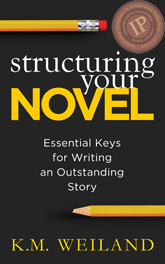
Structuring Your Novel (Amazon affiliate link)
Now when we’re talking about structure, one of the first considerations is that of timing. It’s important to remember that structural timing basically is all about pacing. In ideal structural timing, we want the First Plot Point to land at the 25% mark, the Midpoint at the 50% mark, the Third Plot Point at the 75% mark, etc. I’ve talked about this in great detail in my book Structuring Your Novel. So if you’re interested or if you’re unfamiliar with story structure or the timing of the structural beats or things like that, then you can definitely go deeper with that in some of the other resources.
So when it comes to structural timing in any story, what it’s really all about is pacing. We present the ideal timing which helps us make sure we have enough time to balance the action and the reaction of each section of the story and each structural beat and what it’s intended to offer in this creation of a psychological arc, which is what story is.
However, that timing, as I say, is just an ideal. It’s a guideline. What it’s really all about is the pacing. It’s all about: Is there enough time to develop what needs to be developed here without beating it to death or boring readers because you’re dragging it on too long? That is really all that structural timing is all about.
When you are dealing with the complications of multiple plotlines, one of the questions people often ask is, “Well, it’s literally impossible to have two completely separate First Plot Points happen together at the same time at the 25% mark (or whatever else if you’re dealing with a different structural beat).”
That’s totally true. I mean, if you’re really going to town on a particular structural beat, it could take chapters to get through a sequence of scenes that is meant to dramatize and create this. What’s important here is not so much that every single plot point in every single plotline ends up at exactly the right timing, but rather that it ends up within the right timing within its own structure.
Let’s just imagine that you could separate out the entire plotline of one story from the other and just look at its word count and its timing and its pacing. You’d still want those plot points to happen generally at the ideal moments of structural timing. But then you’re going to mix all those up together—all the scenes from the two different plotlines—so that the timing becomes different within the overarching timing of the book.
And that’s fine, that’s totally fine. One way to approach the timing of multiple plotlines is to plan it so, for example, the First Plot Point from Story A happens and then immediately after that you move over to Story B and have its First Plot Point happen. So it’s bing bing bing—each plot point happening basically at the same time within the story, one after the other. That can be a really good way to keep that really tight timing within your structure.

Writing Your Story’s Theme (Amazon affiliate link)
But it doesn’t necessarily have to be done in that way. Again, it’s really more about the timing of the plot points within the individual plotline—the individual story that’s happening for each plotline within the overarching book—in which case, you can mix and match structural timelines.
How to Create Thematic Resonance Between Multiple PlotlinesYou can instinctively feel into the timing and and how the scenes flow together, because the other factor of making this work and of pulling two or more multiple plotlines together into a cohesive whole is that you really want them to feel as if they’re part of a thematic whole. If you’re dealing with storylines that at first glance don’t have anything in common with each other and aren’t immediately affecting one another, then you have to look for other ways in which you can create that seamless effect for readers, so there is a sense that they’re not reading two different stories, but that they’re reading two pieces of a larger whole.
Looking for ways in which you can create thematic mirroring between one plotline and another is really helpful. Two of the most important ways to dramatize theme within a story are through comparison and contrast. Think of ways in which you can time scenes and create scenes within the multiple plotlines so they comment upon each other in a way that doesn’t have to be specific. And by that I mean, it doesn’t have to be that it’s literally commenting upon something in the other plotline.
Rather, use the patterns that are emerging in the behaviors and consequences characters are facing in one timeline and so forth and so on, or sometimes even just visual symbolic motifs that are rising. It allows you to create comparison and contrast between the two plotlines. After all, there should be a reason you’re sharing both of these stories, both of these plotlines in the same story. They should be related. There is a thematic cohesion, a thematic relation between them.
Look for that and how different things relate to each other—how the actions of characters in one section can cast a mirror or just create an interesting commentary on the actions of a character in the other plotline. Then decide how to arrange those scenes and how to show them within the overarching story so there is a sense of continuity as you move from one to the other, even if you are not strictly aligning all of the structural beats.
How to Use the Climax to Doublecheck That Both Plotlines Are Important to Your StoryAll of this is talking about stories in which you have multiple plotlines that don’t interact with each other for most of the story, but which should, by the end, intertwine in a way that is important, so that both are commenting upon and are necessary and integral to the Climax. If they’re not both integral to the Climax, then they probably don’t belong in the same story.
You want to make sure everything funnels down into that Climax together and that what has happened in both plotlines up until that point is important in informing and allowing what happens in the Climax.
2. How to Write Multiple Plotlines With an Intertwining Plot StructureThen we also have stories with multiple plotlines that intertwine with each other throughout the story.
How to Write an Intertwining Plot Structure With Characters Share ScenesVery often this happens in situations in which the characters who are involved in the separate plotlines know each other and are aware of each other. They may even be specifically working together toward the same overarching goal.
For example, let’s say they’re in a police investigation. There are two different branches of the police working toward the same goal—maybe detectives and forensics. They’re both working toward the same goal, but they’re operating completely separately. They have different jobs, they’re doing different things, and you want to explore both of those in-depth and the experience both of the characters as they’re doing this.
How to Write an Intertwining Plot Structure With Characters Who Aren’t in the Same ScenesIt could also be that the characters have a shared goal that will bring them back together in the Climax but they go their separate ways. For most of the story, they’re not together. They’re off doing their own thing, following their own plotline throughout the story, but they are aware of each other and what they’re doing is impacting each other in a way that is more immediate than you would have in the other type of story where the plotlines are not intertwined.
How to Write an Intertwining Plot Structure for Concurrent Character Arcs
The Right Move by Liz Tomforde (affiliate link)
Finally, you also have stories where this is really obvious, like romances, where the characters are like concurrent tracks running throughout the entire story. They’re aware of each other for the entire story, and their actions immediately impact each other in pretty much every scene. However, you’re still trying to tell a very individual story for each character. For instance, in The Right Move by Liz Tomforde, one of the characters is a basketball player and his plotline is about rehabbing his injured knee, while the other character is dealing with a messy breakup with her ex. They were plotlines that all contributed and affected the main throughline of the relationship, but in which one character wasn’t necessarily directly involved in what was going on in the other character’s plotline.
When structuring a story with multiple plotlines that works like this, what you’re looking at more so than in the other type of story is where one character’s plot point immediately affects the other character’s plot point.
It’s also totally possible they just share plot points. For instance, maybe they’re separate throughout most of the story, but they come together at structural moments like the First Plot Point and the Midpoint, etc., and act together to create that structural through line. This creates a really nice, tight sense of integrity to your story structure, even if the characters are separate for most of the rest of the story.
In these instances, you’re either going to have your characters coming together at the plot points and acting together to create those moments, or the actions of a character in one plotline will immediately affect that beat for the character in the other plotline.
Again, a mystery is a good example of this in that perhaps forensics comes up with a really important clue—that’s their plot point. But then the detectives take that clue and go look for the bad guy, maybe have an encounter with the murderer, that kind of thing. There’s an immediate cause and effect—a domino effect—to how those plotlines interact and are intertwined with one another.
3. How to Write SubplotsThe final thing I want to talk about here is subplots or “story B” as we sometimes talk about them. The thing to understand about subplots is that they are, in essence, exactly the same as any other multiple plotline. The distinction, at least as I’m making it, is that they’re smaller.
When we talk about multiple plotlines, we’re talking about a concurrent storyline with a full story structure. It’s given just as much time and space as the other storyline and is happening throughout the entire book. A subplot, on the other hand, takes much less space within the story. I don’t want to call it an afterthought, because if it’s an afterthought, it should not be in the story. But it’s a side dish. It’s not as important as the main stuff.
How to Ensure Subplots Are Integral to the StoryHowever, and this is super important, subplots have to be integral to the main story. If you can pull them, if they do not matter by the time you get to the Climax, then they probably should not be in the story.
A subplot just for the sake of exploring some little aspect of your story or character should still contribute to the larger structural whole; otherwise, it’s not what you want in your story. When looking at a subplot or any multiple plotline, ask yourself about the bottom line in your story—is it going to matter to the Climax? If pulling it doesn’t affect the Climax, reconsider its inclusion.
How to Fit Your Subplot Into the Plot StructureAssuming the answer is yes, then the way to approach a subplot isn’t much different from what we’ve just talked about. The options for approaching any story with multiple plotlines are similar. The best and tightest way to deal with a subplot is to ensure it fits into the story’s overall structure and its plot points.
If your subplot doesn’t need much space, just have it show up at the main plot points, even if it isn’t directly influencing them. It might show up with its own little mini plot. That doesn’t have to have a huge effect. Again, it’s more of a pacing thing. It’s just reminding readers that the subplot is here and it’s important.
One of my favorite examples of this is from my favorite movie The Great Escape, which is the classic World War II movie about prisoners trying to escape from the German prison of war camp. Usually, when people think about this movie, if you’re familiar with it, they think of it as a Steve McQueen movie. But really, Steve McQueen is a subplot character for most of this story.

The Great Escape (1963), The Mirisch Company.
The main throughline of this story is the British prisoners trying to escape. They’re planning a giant escape where hundreds of people are going to escape the prison. And Steve McQueen is not into that. He’s not a part of that for the entire story. He’s just in and out, doing his own thing. His entire story consists of him trying to escape, getting caught, getting thrown into the cooler, getting out, trying to escape again.
Now, this is an integral subplot because what he’s doing throughout the movie becomes important to the main plotline by the time we reach the Third Act. It is integral to what’s happening. It’s not just an extraneous vehicle for Steve McQueen to do his thing throughout this random movie.
The other thing to recognize, and I think it’s one of the points of brilliance in this movie, is that if you look at the structure, Steve McQueen shows up at every single plot point. That’s about the only time he shows up until the Third Act. The writer and director were able to weave this seemingly random subplot into the overall story in a way that seemed pertinent. This kept Steve McQueen’s character familiar and in front of viewers by syncing what he was doing with the major plot points as they happen throughout the movie. Just as it should be with any multiple plotline, the subplot here was ready to segue him into the main plot in the Third Act. That’s something to think about as you’re considering subplots.
I have to admit I cringe whenever people talk about subplots. I think a better way is to simply think of subplots as part of the larger whole. The idea of a “subplot” often conjures up something extraneous to the larger whole. Sometimes we need those little extra things that come in and inform stories, but it’s much better to think of them as something that contributes to the larger story structure.
***
So that was my long video about multiple plotlines! I have talked about this more on my blog if you want to go into this in more depth. Ultimately, the major thing to understand if you’re contemplating multiple timelines in your story is that it’s all about structure and theme. It’s about how each plotline affects the overall structure of the story or the series. How is each individual plotline structured in a way that is cohesive and solid? And how do they thematically comment upon one another to prove they are two or more pieces of the same whole?
Wordplayers, tell me your opinions! What are some of your favorite examples of authors who are writing multiple plotlines? Tell me in the comments!Click the “Play” button to Listen to Audio Version (or subscribe to the Helping Writers Become Authors podcast in Apple Podcast or Amazon Music).
___
Love Helping Writers Become Authors? You can now become a patron. (Huge thanks to those of you who are already part of my Patreon family!)The post Writing Multiple Plotlines: Everything You Need to Know appeared first on Helping Writers Become Authors.
January 15, 2024
7 Tips to Craft Compelling Character Motivation in Fiction
 From KMW: As “the lie that tells the truth,” fiction only works when it is able to present a reasonable facsimile of reality. At the level of plot, it does this by creating a string of causes and effects that feel plausible. The foundation of this plausibility is the greatest “cause” of them all: character motivation.
From KMW: As “the lie that tells the truth,” fiction only works when it is able to present a reasonable facsimile of reality. At the level of plot, it does this by creating a string of causes and effects that feel plausible. The foundation of this plausibility is the greatest “cause” of them all: character motivation.
There are many ways to approach character motivation. You might start with the motive and see what actions result. Or you might start out knowing what you want to see happen in the plot, then work backward to determine a reasonable motive for such actions. Either way, if the character’s motive works, then so will the plot. If not, the whole story will be in jeopardy.
Today, I’m happy to share with you a post from editor and author C.S. Lakin, in which she dives into some foundational considerations for choosing and fleshing out the best motivations for your characters and your plot.
***
In the vast world of fiction, characters are the lifeblood of every story. Whether you’re writing a short story or embarking on an epic novel, crafting compelling characters is essential for drawing readers into your world. Among the myriad elements that make up a character’s identity, motivation stands at the forefront. Character motivation serves as the driving force behind actions, decisions, and evolution throughout your narrative.
But how can you ensure that your characters’ motivations are not only engaging but will also resonate deeply with your readers?
7 Tips to Craft Can’t-Look-Away Character MotivationLet’s look at seven invaluable tips to help you create characters who not only come alive on the page but who also stay with your readers long after they’ve finished reading the last page.
1. Avoid Useless and Boring DescriptionsCharacterization begins with your characters’ physical and emotional attributes, but it’s all too easy to fall into the trap of generic descriptions. Instead, immerse readers in the character’s point of view (POV). By describing characters through the lens of your characters’ thoughts, emotions, and experiences, you make them relatable and breathe life into your storytelling.
Instead of providing a laundry list of physical traits, allow your protagonist to shape the description based on their perspective, mood, emotions, and experiences. Let readers see other characters as your protagonist does, filtered through the narrator’s unique voice and personality. This approach not only enhances character depth but also immerses readers in the protagonist’s world.
2. Motivation Is EverythingMotivation serves as the backbone of every character’s journey in your story, from the protagonist to the antagonist and even the secondary characters. Motivation is the invisible force driving their actions and decisions. It’s the heartbeat of your narrative.
Begin by understanding that every character, regardless of their role, must possess a clear and believable motivation. Your protagonist’s inner motivation creates propulsion toward an overarching goal, while the antagonist’s motivation needs to create obstacles to the protagonist’s progress.
Start by identifying your characters’ primary motivations, which align with their visible goals within the story. This motivation should be rooted in past experiences, personality traits, and background. Characters should never act on a whim or without reason. Instead, their actions should emerge naturally from their intrinsic drives and external circumstances. Let that motivation drive the plot from start to finish.
3. Put In the WorkCreating well-motivated characters demands dedication and effort. Avoid shortcuts and resist the temptation to take the easy route of vague motivations such as “they just feel like it.” As a writer, you owe it to readers to deliver more than superficial characters who act without reason.
To infuse depth into your characters, invest time in exploring their past, wounds, fears, passions, and beliefs. Recognize that the process of character development is an essential aspect of writing fiction. If you’re serious about storytelling, commit to the laborious task of constructing multidimensional characters.
4. Give Characters Room to BreatheWhile it’s crucial to invest in thorough character development, you don’t need to create exhaustive character biographies before you start writing. Allow your characters room to evolve naturally during the writing process. Sometimes characters surprise you with their actions and insights as you let them breathe on the page.
Writing is a dynamic partnership between the author and the characters. Provide enough depth and background to bring your characters to life but also give them freedom to grow within the context of your scenes. This balance ensures that your characters remain true to their core motivations while evolving organically throughout the story.
5. Focus on the Big Picture—Premise and Core NeedEffective character development begins with a deep understanding of your character’s primary motivation and how it aligns with the story’s premise. Your characters’ goal is the central focus of your plot, and their inner motivation serves as the driving force that propels them toward achieving that goal. Every scene should seamlessly align with this overarching motivation.
Distinguish between your character’s inner motivation (core need) and their goal-driven motivation. The core need is an integral aspect of personality and subconscious motivation, while the goal-driven motivation is tied directly to the external plot.
6: Explore the WoundTo create truly compelling characters, delve into their past experiences and emotional wounds that shape their motivations. Consider the emotional and psychological scars that influence their fears, insecurities, and behaviors.
Take a moment to reflect on your own life and consider what motivates your goals. Apply this introspection to your characters. Understand that their pasts, upbringing, and life events are the ingredients that contribute to their unique motivations.
7. Keep It Relatable—The Three M’sThe easiest way to remember all these points is to reflect on the 3 M’s: Mindset, Motivation, and Mood. These elements provide readers with immediate insight into your character’s state of mind, what drives them, and their emotional context.
1. MindsetPortray your character’s current state of mind, attitude, and immediate concerns. Avoid creating characters who are entirely carefree or devoid of inner conflicts. A character’s mindset should be influenced by motivations and past experiences.
2. MotivationConvey why your character is taking specific actions or pursuing certain goals. Everything your character does should be rooted in sound motivations that are informed by past experiences and personality traits.
3. MoodReflect your character’s mood through thoughts, actions, and dialogue. Connect mood to mindset, highlighting how the character’s inner world influences behavior.
***
Crafting character motivation is an art form that enhances your storytelling. These seven tips provide a roadmap for creating characters that not only captivate readers but also drive your plot forward and emotionally attach readers to your characters. Characters with well-defined motivations are the heart of a compelling story. Invest the time and effort needed to bring them to life on the page, and watch as your readers become deeply engaged in the worlds you create.
The post 7 Tips to Craft Compelling Character Motivation in Fiction appeared first on Helping Writers Become Authors.
January 8, 2024
Lessons From 2023: 5 Reflections on “Flat Arc” Periods
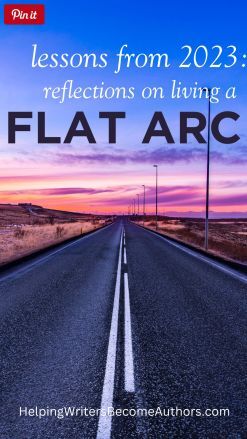 Welcome to 2024! And welcome to what has become a yearly tradition here at Helping Writers Become Authors. Every January, I write a New Year’s post in which I look back at the year that has passed and reflect on its major themes, lessons, and gifts. When I began this little ritual six years ago, the idea was to focus specifically on what writing lessons I may have learned. However, I quickly realized the lessons that most impacted me as a creator were inevitably part of the much vaster context that is my life.
Welcome to 2024! And welcome to what has become a yearly tradition here at Helping Writers Become Authors. Every January, I write a New Year’s post in which I look back at the year that has passed and reflect on its major themes, lessons, and gifts. When I began this little ritual six years ago, the idea was to focus specifically on what writing lessons I may have learned. However, I quickly realized the lessons that most impacted me as a creator were inevitably part of the much vaster context that is my life.
Indeed, if you’re one of those who have travelled with me on this site over the years, you know my perspective on storytelling techniques has become increasingly life-centered—according to the understanding that story and life are inextricable. Life creates story; stories create life.
As I began mulling on this year’s post, back in December, I realized that although this was a huge year of forward momentum and productivity for me, it wasn’t a year that was as lesson-packed as some of those previously. Particularly in 2020, 2021, and 2022, I reflected on the intense drama, transformation, and often struggle I was moving through in my life. In comparison, 2023 was a good year, and it felt almost… flat.

Creating Character Arcs (Amazon affiliate link)
And that’s when I realized that 2023 was, for me, a year in which I was following a Flat Arc, whereas in the previous years I had been on the adventure of Change Arcs.
For those who have read my book Creating Character Arcs, you’ll remember that a Change Arc is one in which the protagonist struggles to transform perspectives, personal identities, and subsequently actions. The protagonist moves from a comparatively limited perspective or “Lie” into a broader perspective or “Truth.”
A Flat Arc, by contrast, is one in which the protagonist already knows the story’s current Truth. Instead of being challenged to transform perspectives, the character is challenged to live a Truth that was previously earned.
The Glorious Importance of Flat Arcs in Our LivesI’ve been mulling on this lately, having made a few videos about Flat Arcs over on my YouTube channel. Originally, I was planning to publish a more “writerly” post on Flat Arcs this year (and I may yet), but as I began to plan this week’s New Year’s post, I realized my personal experiences this year perfectly represented so much of what I wanted to say about the importance of Flat Arcs.
Flat Arcs don’t sound very flashy or glamorous. And in many ways, they are not. They’re not about becoming, growing, or transforming. They’re about being. As such, they are the foundation of everything. Flat Arcs represent Order in contrast to the Change Arcs’ necessary Chaos.

The Hero With a Thousand Faces Joseph Campbell (affiliate link)
It’s true that the Positive Change Arc is the darling of character arcs. The quintessential Change Arc is the Hero’s Journey (among others). It is the archetypal wrestling of Light Against Shadow, Progress Against Stagnation, Liberation Against Slavery. The Change Arc is, as Joseph Campbell so poignantly points out in The Hero With a Thousand Faces, the winner-takes-all battle of the heroic principle against the tyrant Holdfast, “keeper of the status quo.”
Gives me shivers just writing it!
And yet, this epic dictate brings with it an implicit connotation that the status quo is somehow bad. After all, it is the tyrant to be overcome. So shouldn’t we be overcoming it all the time?
But this cannot be true. The very existence of Flat Arcs shows us this (particularly in how Flat archetypes necessarily show up in between every Change Arc in the life cycle).
Here’s the thing I realized toward the end of last year: you cannot transcend the status quo until you have mastered the status quo.

Writing Archetypal Character Arcs (affiliate link)
The status quo is a necessary foundation on which to build the next iteration of one’s life. Skipping from new Truth to new Truth to new Truth without taking the time to fully integrate and embody that Truth represents unsustainability of the highest magnitude. Particularly when considering the sequential Change Arcs of the archetypal life cycle, which I’ve talked about in my book Writing Archetypal Character Arcs, we can see how each later Change Arc can only emerge from a full integration of all previous Change Arcs.
And where does that integration happen? In Flat Arc periods.
This doesn’t mean Flat Arcs are periods in which nothing happens. Not at all. Indeed, the external action can sometimes be even more intense in a Flat Arc than in a Change Arc, as the protagonist takes what was learned and now uses it to transform the surrounding world and its reality. It can be a time of intense conflict with others who don’t like that the protagonist has changed and is, at least implicitly, prompting change in others as well.
As a result, and as an inherent part of this necessary integration, a Flat Arc can also be a time of deep soul-wrestling, which is why doubt is one of the key factors in developing a Flat Arc character in a story. Previously, this character learned a new Truth that presumably made just a little bit more sense out of life. But now, this character must be willing to master this new status quo. The challenge is to avoid backsliding and to cultivate the discipline and sheer willpower necessary to live life at a higher octave than was previously supported by the world. Without cultivating the discipline to become worthy of the new Truth previously learned in the Change Arc, the character will never be able to build a foundation for the next upgrade of perspective.
This isn’t easy. Even though Change Arcs may sound like the great adventures of our lives, requiring as they do tremendous courage and fortitude, it is the Flat Arcs that truly test whether we are willing to live our new Truths in the face of life’s often pervasive boredom, grinding resistance, and determined delusion.
5 Tips for Successfully Living Your Flat ArcsIn short, I suppose what I’m trying to say is that: Flat Arcs are glorious! They are our proving grounds. It’s like the Axel in figure skating: all that twirling about doesn’t matter if you can’t stick your landing.
And so to open this New Year, here are five lessons I have learned from one of the most important Flat Arcs of my life to date.
1. Skipping From Change Arc to Change Arc = BypassingBeginning with a Disillusionment Arc in 2016 that eventually helped me complete an overdue Maiden Arc starting in 2018, followed by a Hero Arc in 2021, the past seven years have been a momentous epoch in my life. These transitions were soul-deep and at times excruciatingly painful. But they also, without qualification, created the most glorious years of my life. I am so grateful for these journeys. As hard as it all was, I would choose it all over again without modification.
I am proud of myself for the sheer courage and determination that allowed me to face outgrown perceptions, to let old ego identities die, and to rise into the rebirth of newly evolving perspectives. Back then, I tackled the need for growth with an almost rabid intensity. And despite of how hard it often was, I loved it. (I don’t think it a coincidence that I’m best known for my work on character arcs; transformation is where it’s at, baby!).
In some ways, the harder lesson for me was that however sexy transformation may be, it isn’t where life is truly lived. Life is lived just as much, if not more, in the in-between moments, the “down” phases when it seems like not much is happening. It is lived in the periods of integration.
In these past seven years, I have changed so much as to be unrecognizable. I embraced this phoenix existence with as much pride as determination. And that, too, was an identity that had to go. Sometimes I’m a phoenix with wings of fire, rising out of the ashes. Most of the time, though, I’m just a regular bird with regular wings, hopping around looking for worms in the dirt.
This year, I had to realize I couldn’t rush change. I couldn’t summon it. I couldn’t get ahead of the game and decide to change. I couldn’t do anything that would put me in the driver’s seat for the next Change Arc and make it any easier to live through than the last one. In short: I couldn’t cheat. Thinking I could—thinking that if I could just figure out the end game of everything I ever wanted—I could fast-track myself to even more transformation faster and easier? Nope, that’s just bypassing.
A Change Arc without a Flat Arc to follow it is incomplete. The Flat Arc periods are just as important as the flashier phoenix chapters. Maybe Flat Arcs don’t offer as many dopamine hits or changes of scenery, but they are overflowing with blessings. Flat Arcs are when we have the opportunity to slow down a bit and to reap—at least internally—some of the fruits of our own labors.
2. Flat Arcs Are Hard WorkFlat Arcs are the periods in which we put in the hard work to solidify our victories and ensure that what we have previously learned and gained cannot slip away from us. Flat Arcs are a period of vigilance. And sometimes being the night watchman is a whole lot harder than being the badass warrior.
Change Arcs (in my experience so far) are less about putting in the hard work and more about simply hanging on for dear life. In some respects, Change Arcs happen to us. Life hands us an initiatory experience, often a crisis, and we have no choice but to hurtle over the edge of the roller coaster and find out what we’re made of. Flat Arcs, by contrast, are more in our control. We get to choose whether or not we will step forward and live out the principles we were shown during our terrifying Change Arcs.
It’s one thing to value a Truth when life is hairy and we’ll grab onto anything that will help us survive. It’s another thing altogether to value that same Truth when life has slowed down, when the devil isn’t at the door anymore, and when the next threat is so far away on the horizon as to seem almost invisible. Flat Arcs are filled with challenges, but they are of a more mundane, often boring, sometimes frustrating sort. If Change Arcs are the Declaration of Independence, then Flat Arcs are the minutiae of bureaucracy—not very glamorous, but everything falls apart if the work doesn’t get done.
For me, the hardest flex of my Flat Arc this year was simply being present and doing the work that was before me without fobbing it off into the future. I wasn’t always doing the things I wanted to do, but everything I did was a slow build based on the foundation of the previous Change Arcs. This past year was one of the most productive I’ve had in a long time. In no small part this was because, after so long, I finally had the space within myself to devote my time and attention to external pursuits. I poured myself into my business and my writing in ways I wouldn’t have been able to do before.
3. Mastering the Status QuoI can look back on the period of my life prior to the massive string of Change Arcs that kicked off in 2016, and I can see how the discipline I showed in those earlier years was the foundation that helped me get through those later challenges. Every moment of boring discipline I showed in my business or my personal development or my relationships became an invaluable lifeline once that hurricane of change hit. To the degree I had “mastered my status quo” prior to 2016, I was able to support a much greater level of transformation than I would otherwise have been able to reach.
Recognizing this has helped me cultivate patience and maintain discipline in this current Flat Arc period. For me, this has looked like getting meticulous with my mental, physical, energetic, and spiritual health. I have spent this period of relative calm, when there have been fewer demands and responsibilities, in being vigilant with myself. I have not turned away from what is hard or scary. I have looked my shadow in the face every day, have chased after my pain, pushed against my places of constriction, found the weaknesses that hold me back.
I have relentlessly brought in every resource I have learned, found, or could dream up to do the work now, while I can, before life itself once again starts rolling faster and faster again. Because it will roll again. The next initiation will come. And instead of being flung headfirst into the maelstrom this time, I will be waiting for it with all due respect for its awesome power.
Mastering the status quo of a Flat Arc means being present with the Truths learned in the previous Change Arc. Change Arcs are all about that flash of insight—that Moment of Truth—that leads to an expansion of the self. But that flash isn’t, in itself, the whole of that particular Truth. This helps us see that Flat Arcs are not as static as is sometimes thought. Rather, Flat Arcs are a testing ground for fully learning these new Truths, for refining them. Only once these Truths have fully integrated into our beings can we transcend their limitations and move up another level in the spiral.
4. Why Successful Flat Arcs Are the Only Way to Keep Change Arcs From Going Catastrophically WrongChange Arcs are all about energy. They are kinetic, often chaotic, full of life and possibility and expansion.
Flat Arcs are physical. They are grounded, practicable, orderly. They are not about the potentiality of what could be, but about the bounty of what is.
According to that analogy, we can see how Change Arcs, by themselves, are utterly unsustainable—even catastrophically destructive. More than that, without the stability and structure of the Flat Arc periods, the sheer energy that is unleashed in a Change Arc can become counter-productive and cause its subject to self-destruct. Of course, the drama of my language here is referring to big Change Arcs. The sheer primality of archetypal, initiatory Change Arcs packs a huge wallop. Without the foundation of a previously successful Flat Arc period, that kind of charge can literally kill or maim.
I experienced this up close and personal during my own epic sequence of Change Arcs. I 100% credit the foundational work—particularly the mastery of discipline in general—that I had done in the previous Flat Arc period to getting me through those years. But I also know that one of the reasons that transformational phase was so difficult was because I really wasn’t prepared to get sucked into the hurricane.
If there is one thing I now know, it is that the hurricane of change will come again.
If there is a second thing I know, it is that we can never truly prepare for the unknown. By its very nature, it is unknowable. To believe that because we survived one epoch necessarily means we have the chops to survive the next is the most dangerous sort of arrogance.
But if there is a third thing I know, it is that if I am to reap the glories of the next Change Arc, then I must prove myself utterly faithful to this current Flat Arc period. Right now it is summer, and the harvest is thick upon the ground. When winter comes again, my storehouses will be full.
5. When the Flat Arc Starts to Sing, Then You’re Ready for ChangePeople can interact with the inevitability of change in one of two limited ways (and often both).
Either, like the grasshopper in the fable, we believe summer will never end, the storms will never come, and the hardships of life will never touch us or our loved ones. Or we get hooked on the thrill of the adventure and go storm chasing in the belief that our sheer familiarity with the hurricane means it can’t hurt us. (If you’ve studied the dual shadow archetypes associated with each archetypal Change Arc, then you’ll recognize these responses as passive and aggressive, respectively.)
Based on what I’ve shared here, you may notice that I tend toward the latter response (although not exclusively). I want change, and I want it yesterday. But if this year has taught me that the basic lesson of the Flat Arc is presence, then I have also slowly come to trust in the perfection of its timing. And this is beautiful. Change is too deep and too dangerous to be thrust upon the unwitting or the unready (although it will be if we do not cooperate by facing and accomplishing the work that is before us).
What I have learned this year—in perhaps the gentlest and most loving lesson of all—is that when we are faithful with our Flat Arcs, then eventually in the fullness of time, they bloom out. Where once our new Truth may have felt like a suit of clothes that was too big for us, causing us to stumble and trip about like a child, eventually we grow into it. Our eyes and our hands and our muscles become accustomed to the work we are now doing. Our skills grow, and so does our strength.
We move from Not Knowing That We Don’t Know to Knowing That We Don’t Know to suddenly beginning to suspect that perhaps for a while now we have been Not Knowing That We Know. Once there, we are only a breath away from the final step: Knowing That We Know. And when we have reached that, then it is time for the next Change Arc.
As we transition into a new year, I feel myself emerging somewhere in those final steps of this current Flat Arc. I feel how I have changed, how I have integrated. I feel how the impetus for yet more change is gathering its charge beneath my feet. This coming year will, I suspect, be momentous. I sense the rumblings of a Queen Arc. If I am right (or if I am wrong), meet me back here in one year, and I will tell you all about it!
Until then, I hope these thoughts on the beauty and power of the Flat Arc will offer inspiration or perhaps even guidance for the New Year that is before you. Whether you are currently following a Flat Arc or a Change Arc, large or small, my wish for you is that 2024 will be a year of profundity, bounty, and Truth. Happy New Year!
Wordplayers, tell me your opinions! What kind of arc were you on in the past year? Tell me in the comments!
Click the “Play” button to Listen to Audio Version (or subscribe to the Helping Writers Become Authors podcast in Apple Podcast or Amazon Music).
___
Love Helping Writers Become Authors? You can now become a patron. (Huge thanks to those of you who are already part of my Patreon family!)The post Lessons From 2023: 5 Reflections on “Flat Arc” Periods appeared first on Helping Writers Become Authors.
January 1, 2024
Top 10 Writing Posts of 2023
 Happy New Year, everyone! Welcome to 2024!
Happy New Year, everyone! Welcome to 2024!
For me, 2023 was an incredibly productive year. What makes me most pleased and proud is that I feel I was able to return to a high level of productivity in a way that honored everything I’ve learned from the severe burnout I experienced in previous years. Above all, this has been a year of working through healing and growth in my relationship to the business side of being a writer (something I’ll talk about in a future post).
It seems so long ago now, but the biggest news of the year was that I published what is absolutely my favorite book I’ve ever written, Writing Archetypal Character Arcs . This book is a marriage of deep story theory with the psychology and philosophy of life itself. It explores thirty-six archetypes, all centered around the six transformational character arcs of the human life cycle. I’ve been so happy with its reception, and if you haven’t read it yet, I hope you’ll check it out!My surprise project of the year was something totally out of left field—the Archetypal Character Guided Meditations. Based on the six primary archetypes in my book Writing Archetypal Character Arcs, these hour-long meditations are designed as “dreamzoning” journeys that allow you to explore your own stories through the powerful archetypal symbolism and structural beats of each arc. I had so much fun creating these six unique mediations and found them so moving and impactful in my own life.View this post on Instagram
A post shared by KM Weiland (@authorkmweiland)
I don’t do many interviews these days, but when I got the chance to work with the awesome team on the Studio Binder channel, I jumped at the chance to contribute to a video about the fundamentals of story structure, featuring one of my all-time favorite (and, IMO, perfectly plotted) movies, Jurassic Park.I was incredibly honored for Helping Writers Become Authors to receive its 10th consecutive mention on Writer’s Digest‘s list of 101 Best Websites for Writers. So amazing. What a ride this has been. I find myself feeling more humbled every year and more determinedly committed to serving the writing community to the best of my gifts and abilities. Thank you, all!I got to see Writing Your Story’s Theme published in France and Creating Character Arcs translated into Portuguese.View this post on Instagram
A post shared by KM Weiland (@authorkmweiland)

 Two of my novels,
Behold the Dawn
and
Dreamlander
both got brand new covers!
Two of my novels,
Behold the Dawn
and
Dreamlander
both got brand new covers!
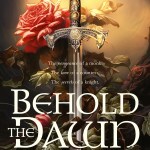
 One of my goals this year was to get back into the swing of creating content on YouTube. I’ve been posting weekly vids in response to viewers’ questions, and you all have prompted some great conversations. Check it out, and if you have a question you’d like answered, be sure to leave it in the comments on any one of the vids!I’ve backed off on my social presence a lot in recent years, but last year I started playing around with Instagram in earnest and started quite enjoying it! Although I still post regular content on Facebook and Twitter/X, I post things on Instagram (including some glimpses into my own life) that I don’t post anywhere else. I hope you’ll swing by and say “hi!”
One of my goals this year was to get back into the swing of creating content on YouTube. I’ve been posting weekly vids in response to viewers’ questions, and you all have prompted some great conversations. Check it out, and if you have a question you’d like answered, be sure to leave it in the comments on any one of the vids!I’ve backed off on my social presence a lot in recent years, but last year I started playing around with Instagram in earnest and started quite enjoying it! Although I still post regular content on Facebook and Twitter/X, I post things on Instagram (including some glimpses into my own life) that I don’t post anywhere else. I hope you’ll swing by and say “hi!”For those of you who know that I struggled mightily with writer’s block in past years, you’ll understand my happiness in being able to report that I have now completed a full year of writing fiction once again. I’m taking it super-slow and putting zero pressure or deadlines on myself as I outline what is quickly becoming a passion project—a dark fantasy called Wildblood that is turning out to be an incredibly deep and rich journey for me on a personal level. It may be a while before it’s finished, but I can’t wait to share this story of my heart with you all at some point. In the meantime, I’m just enjoying myself.View this post on Instagram
A post shared by KM Weiland (@authorkmweiland)
On the personal front, I was able to do a good bit of travelling this year, including two visits to family in another state and a month-long sojourn in the New England Berkshires, during which I got to visit Sleepy Hollow and Salem, among so many other deeply memorable adventures. I embarked on that trip knowing it would be a portal and wanting it to shake up some of the stuck energies and patterns in my life—and it surely did! I’m still processing it all, but I know it will be rippling into my life for a long time to come.View this post on Instagram
A post shared by KM Weiland (@authorkmweiland)
View this post on Instagram
A post shared by KM Weiland (@authorkmweiland)
As for this coming year, I have several plans in the works. In addition to continuing with my fiction WIP, I am considering expanding my YouTube channel into longer videos. Many of you have requested that I include a transcript of the videos (which I can’t do on YouTube due to word limits in the descriptions), so I am thinking about incorporating videos into the site, perhaps alternating them with the regular posts every other week. Let me know what you think about that!
The top project I want to complete this year is a short course that delves deeper into exploring the relationship of the shadow archetypes to the six main archetypes (Maiden, Hero, Queen, King, Crone, Mage) that I’ve talked about in Writing Archetypal Character Arcs.
I also have ideas for a new book on advanced story structure, and I’m even toying with creating a huge set of masterclasses that will cover all my most important information. That, obviously, would be a gigantic project that would span more than just this year! In view of how many requests I get from people looking for editors who follow my system, I’m also toying with the idea of offering a certification. I’d love to hear your thoughts on that as well.
I wish you an amazing New Year, full of joy, challenges, growth, satisfaction, and the best stories ever!
And now, just in case you missed them (or want to revisit them):
My Top 10 Posts of 20231. How to Create Insanely Complex Characters Using “Shadow Theory” (which was far and away one of my most popular posts ever with over 100k views in nine months! o.o)
2. Genre Tips: How to Write Fantasy (which was also my most popular podcast episode of the year)
3. 5 Tips for How to Return to Writing After a Long Break
4. The Daily Routine of a Full-Time Writer
5. How to Rediscover the Joy of Writing
6. Genre Tips: How to Write Literary Fiction
7. Your Story Isn’t Working? Here Are 6 Problems to Troubleshoot
8. 5 Ways to Use Your Character’s Shadows to Power Your Story
9. 8 Different Types of Scenes
10. 6 Lessons Learned From 4 Years of Writer’s Block
Wordplayers, tell me your opinions! What was the most memorable writing event for you in 2023? Tell me in the comments!Click the “Play” button to Listen to Audio Version (or subscribe to the Helping Writers Become Authors podcast in Apple Podcast or Amazon Music).
___
Love Helping Writers Become Authors? You can now become a patron. (Huge thanks to those of you who are already part of my Patreon family!)The post Top 10 Writing Posts of 2023 appeared first on Helping Writers Become Authors.
December 25, 2023
Merry Christmas, Wordplayers!
Dear Wordplayers, Merry Christmas!
I love Christmas. It has always been far and away my favorite holiday. For me, it has always been the holiday of gratitude, even more than Thanksgiving. Surrounded by loved ones, nurtured by traditions, and sandwiched between the glories and disappointments of the year that is past and the hopes and challenges of the year to come—it is a potent moment.
For me, this past year was both incredibly busy and incredibly rewarding. It is a year that is closing out with a return to some of its more difficult challenges, in the midst of which this Christmas holiday is a bright spot of joy and a grounding reminder of my own priorities and everything I am most thankful for.
I am being reminded that this is the dance of life. Here on the cusp of the Northern Hemisphere’s winter solstice, looking out over barren cornfields and frost-burned prairie, nipped by the wind while huddled in the depths of hood and scarf, I am reminded of the beauty and the necessity of this dance—winter and summer, cold and hot, dark and light, moon and sun, sadness and joy. One cannot exist without the other. Life does not exist without one or the other.
In this year when the world has seemed to spin on faster and faster and faster for all of us, when so many uncertainties have faced us and challenged us—I am grateful to be alive. I am grateful to be here and to get to experience it all, to stretch my nervous system to the limits of its capacity for both pleasure and pain, knowing I will be stretched again. That is life, and my heart bursts for the infinite beauty of it all.
I hope in this season, on this day, that as you look out onto the horizon of the solstice and see the world begin to turn once more into the next phase of its cycle, that you are surrounded by all the things that bless you most. If you are reading this, then you are one of those blessings in my life. Thank you for seeing the old year out with me. I look forward to ringing in the new one—in all its glorious complexity—with you as well.
Merry Christmas!

The post Merry Christmas, Wordplayers! appeared first on Helping Writers Become Authors.
December 18, 2023
12 of My Favorite Books in 2023
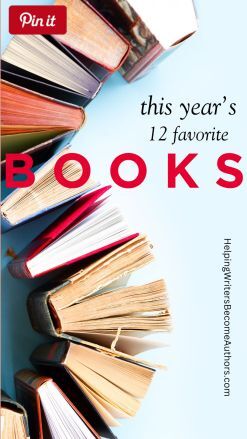 For a few years now, I’ve been lamenting that I wasn’t reading at the pace I was accustomed to in the past. This year, I’m happy to say… I’m baaaaaaaaaacckkk!!! :p
For a few years now, I’ve been lamenting that I wasn’t reading at the pace I was accustomed to in the past. This year, I’m happy to say… I’m baaaaaaaaaacckkk!!! :p
It was a good reading year, ya’ll. I enjoyed myself thoroughly and encountered so many new authors and new ideas. Today’s post features some of my favorite books of 2023, among which are some of my new all-time favorite books, both fiction and non.
I hope you’ll find something new to read here. Be sure to leave me your suggestions for next year!
Total books read: 95
Fiction to non-fiction ratio: 66:29
Number of books per rating: 5 stars (8), 4 stars (33), 3 stars (36), 2 stars (8), 1 star (0).
(Note: All links are Amazon affiliate links.)
Writing Books The Anatomy of Genre by John TrubyThank God I live in a world with John Truby. Thirteen years ago, I read his Anatomy of Story and immediately knew I was connecting with a mind that spoke the language I so deeply wanted to speak. Thirteen years later, he’s touched me with another book that once again speaks to me exactly where I’m at as a writer and a person, both reflecting and broadening my perspectives of the craft. This is not a simple glossary of genres with the standard how-to beats. This is a revolutionary examination of story as the archetype of all life. It will teach you how to write (and transcend) your genres, but more than that, it will take you on a profound journey through history, sociology, and philosophy. Truly masterful.
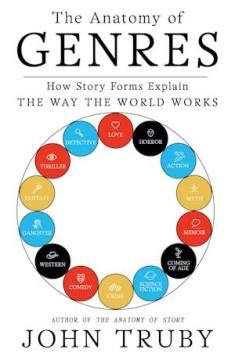
This is one of those books I think I shall need to read more than once in order to tap every drop of goodness. Although more focused on memoir-type prompts rather than fiction (but there’s some of that too), this is a tool for recognizing and using story as a deep-dive into one’s self and the meaning of life. Rich, beautiful, and provoking in all the best ways, this is a book that will stay with me for a long, long time.
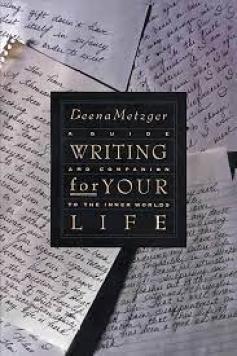
Writing for Your Life by Deena Metzger (affiliate link)
I quoted Metzger in the following posts this year:
5 Ways to Use Your Character’s Shadows to Power Your StoryImposter Syndrome for Writers Is a Real Thing (+ the Key to Slaying It)How to Discover What Your Character FearsGeneral Non-Fiction Identity: Youth and Crisis by Erik H. EriksonSomeone put me onto Erikson after noticing that I, too, speak about “life cycle archetypes” in my teachings about archetypal character arcs (although in a totally different way from Erikson). Written in the late 1960s, I feel the book has weathered the test of time well and offers deep insight not only into its contemporary generation, but also into the timeless struggles of the human growth arc into individuation. The prose is dense (he apologizes to his editor wife in the acknowledgements), but very juicy and worth the read.
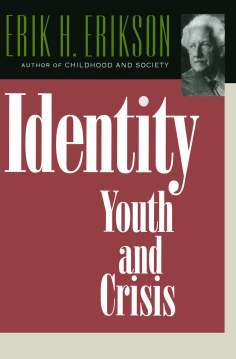
This book was, in a word: a revelation. I’ve been studying personality theory and models for decades, and this exploration of the five security patterns that develop in early childhood is by far one of the most insightful, useful, and practical. It showed me things about myself that shocked me, even after all these years of study, and it offers some of the most practical, embodied tips for getting out of negative patterns that I’ve ever seen presented. I’m buying copies for everyone I know. Highly recommend.
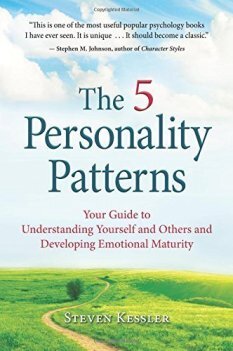
A great little primer on Brussels in particular and Belgium by extension. It’s a fast read, but well-organized, entertaining, and interesting.

One of the best overviews of American history I’ve ever read. I’ve been fascinated by the theory ever since hearing it summarized in a podcast years ago. The book fleshes out the main theory (of eleven distinct North American subcultures) by exploring their causal impact from the earliest European colonization efforts through the War of Independence and the Civil War to present day. Brings nuance and insight to many aspects of American life, everything from personal relationships to political tensions.
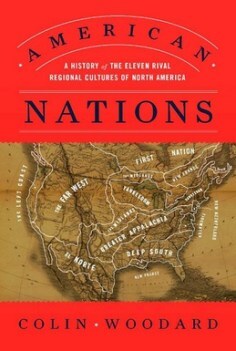
I started watching Paola’s beautifully earnest YouTube channel last year and couldn’t get enough of the gorgeous Northwestern settings and the simple but profound insights she shares from her rural life. The book is a lovely extension of everything she presents in her videos—her own beautiful spirit above all. Wise beyond her years, vulnerable, honest, but always positive, her thoughts on quiet intentional living inspire and uplift.

Honestly, I have no words. I hardly feel qualified to even offer an opinion on this book, except to say it may be the single most masterful story I have ever read. The topic is so raw and powerful and serious, and yet the story never loses itself in its message. The writing is poetry of the highest sort. The characters are authentic and real and always surprising. Nothing about this book feels rote; it feels channeled. A truly incredible experience.
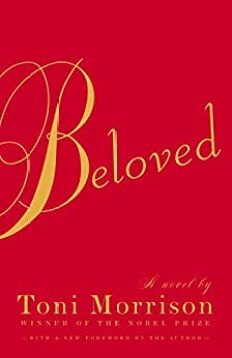
Sometimes when I finally get around to reading a book that has been in the popular consciousness forever, I end up wondering, Where has this book been all my life? And yet, so often it turns out that the book was the one waiting for me, until the perfect time in my own life. (I suppose Coelho would say that is the Language of the World.) I’m glad I got to wait until now to read this simple, profound, fun, deep little book. I understand it now in ways I never would have had I read it earlier. I will return to its wisdom again and again, I am sure.
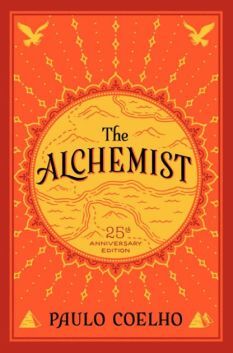
A macabre poem written with blood in the snow. This is a can’t-look-away dark fairy tale that rises above itself through its resonant nightmarish symbolism and imagery and its incredibly rich prose.
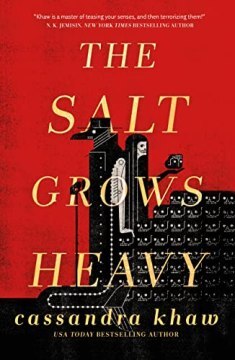
I don’t know quite what I was expecting when I picked up this epic saga of Arthurian legend—but it wasn’t this quirky, almost Pratchettesque blend of tragic irony and good-natured humor. Each section was published as its own book when it first came out, and each has its own flavor. Like most people, I suspect, I was most enchanted by the first volume (“The Sword in the Stone”) about young Arthur’s boyish misadventures under his tutor Merlin. Overall, a tour de force, highly entertaining, and a rightful classic. My only regret is that I missed out on growing up with it.

One of the author’s best. A deep, situational romance that rises above its own tropes to feel like a true exploration of emotions. For once, the breakup in the Third Act (one of my least favorite tropes) is actually heart-wrenching and feels true.
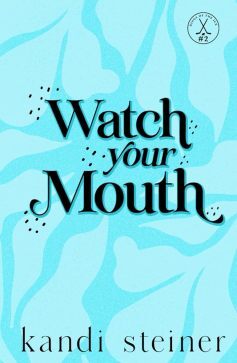
And if all these goodies aren’t enough to fill your To Be Read pile next year, here are a few more! 
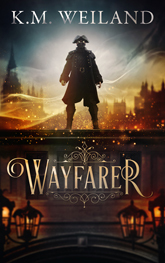
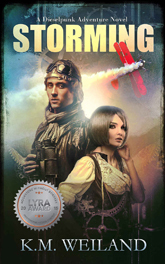
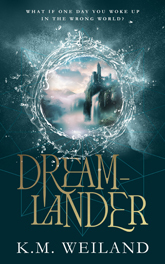
 Wordplayers, tell me your opinion! What were your top books of 2023? How many books did you read? Tell me in the comments!
Wordplayers, tell me your opinion! What were your top books of 2023? How many books did you read? Tell me in the comments!Click the “Play” button to Listen to Audio Version (or subscribe to the Helping Writers Become Authors podcast in Apple Podcast or Amazon Music).
___
Love Helping Writers Become Authors? You can now become a patron. (Huge thanks to those of you who are already part of my Patreon family!)The post 12 of My Favorite Books in 2023 appeared first on Helping Writers Become Authors.
December 11, 2023
How to Market a Book: 6 Steps From a Full-Time Author
 While some of us may have known even as children that, “I want to be a writer when I grow up,” few of us probably tacked on, “and a marketer and businessperson and entrepreneur.” And so it’s little wonder that when we do grow up (or not, as per Neil Gaiman), we may be a tad disillusioned to discover that not only do we need to learn how to write a book, we also need to learn how to market a book.
While some of us may have known even as children that, “I want to be a writer when I grow up,” few of us probably tacked on, “and a marketer and businessperson and entrepreneur.” And so it’s little wonder that when we do grow up (or not, as per Neil Gaiman), we may be a tad disillusioned to discover that not only do we need to learn how to write a book, we also need to learn how to market a book.
How to market a book has never been the focus of this site. When asked, I have often told people that I in no way consider myself a marketing expert. Instead, I point them to those who have been my own most insightful teachers, including Joanna Penn and David Gaughran. However, in hearing myself say that in an interview not long ago, I realized how disingenuous that statement is. I’ve been successfully marketing my books for sixteen years with over half a million sold, so I guess I must know more than I think I do!
I was particularly pleased to receive the following from reader Brenda Holiday, requesting this post:
If you’re open to requests, I would LOVE to learn about your marketing strategies, if you’d ever care to teach them. They’re engaging and exciting to me as a writer. I want to learn how to do this with my own projects.
Honestly, that was one of the nicest compliments I’ve ever received! That is exactly how I’ve always wanted my marketing to be perceived—as an offering in itself rather than an ask.
Today, I’m going to take a stab at sharing my personal ethos and process for how to market a book, not just in hopes that a specific tip might prove helpful, but because it can be so grounding to understand the big-picture process from another writer for whom marketing is not second nature.
My Personal Ethos Around How to Market a Book
Outlining Your Novel (Amazon affiliate link)
In pondering why I still feel so unqualified to speak about marketing, I think it’s because while I’m a planner and an outliner when it comes to writing, I’m actually much more of an intuitive pantser when it comes to marketing. I just throw stuff at the wall and see what sticks. In the early years, I threw everything I could think of at the wall, and it took me literally a decade to start applying the 80-20 rule and figuring out where my efforts were actually paying off.
I may write another post soon about why I think marketing and business is often so hard for writers (here’s one from a few years ago). One reason, I think, is that many people share my personal hang-up about not wanting marketing to feel intrusive. My own ethos about how to market a book is always evolving as I work through my own blind spots and programming around earning money and promoting, etc. However, it has always been founded on one simple rule:
Give more than you ask.
I put out a ton of free content. Over the years, I’ve realized that in many ways, the free stuff is where my heart’s at. I love giving content away. When I was going through a difficult period a few years ago, questioning my identity as a writer, the one thing that never wavered was my commitment to this site. I didn’t miss a week, even though it wasn’t directly profiting me in any way.
This site has always been the foundation of my business as a writer. I do it because I love it, but I also do it because it is what makes it possible to sell enough books to make a living. Even though everything on the site is free (unless you buy a book, of course), I still count the site as my main income generator. This is for two reasons:
It draws in potential future customers.It generates trust in me and my content, so that when I am ready to sell something, people want to purchase.That’s half my marketing already done even before I start planning a book launch.
The second part of my personal marketing ethos is:
Always be watching and learning.
I’m not a trend-setter or even a trend-studier. But I do pay close attention to what works for me in other people’s marketing. This is how I hack story theory as well: in interacting with other authors’ content, I notice my own responses and ask, “Why?”
Did this email get me to buy? Why?Did I delete this email without even opening it? Why?Did this email make me mad, so that I unsubscribed? Why?Did this email get to me to buy, but now I feel kind of icky about it? Why?Did I buy this book or product, but then feel like it wasn’t worth my money or didn’t meet my expectations? Why?My golden rule is:
Never use a marketing tactic you wouldn’t appreciate when the roles are switched and you’re the consumer.
6 Ways to Successfully Market a BookMarketing, as I see it, is a conversation. First, you have to draw people into the conversation (aka, get them to notice you); but then you have to sustain the conversation. By the very nature of conversing, especially over a lengthy period of time, you form relationships. Therefore, the marketing itself becomes part of the relationship.
And relationships are highly individualistic. The relationship I have with the people who buy my books is not the same relationship other writers will have with their audiences. It’s important to note that although we can all learn from other writers and marketers, what works for us will inevitably be as highly personalized as our stories.
With that in mind, here are the six cornerstones of my business as a writer. These are, in my estimation, what have allowed me to be a successful writer and to earn a comfortable living from the sales of my books and other related products for the last sixteen years.
1. Free ContentAgain, for me, it all starts here. The vast majority of my weekly effort is put into the free content I produce. I pour my heart into this blog, the related podcast (see the bottom of the post), and the weekly Q&A videos. In part, I do it because I know it creates a platform from which I can market salable items. But I also do it because I love it. And I think this is the key to sustainable marketing: you have to find a platform that aligns with your values, your personality, and your passion.
Free content has the obvious benefit of being a no-risk offer for potential customers. They don’t have to do anything, not even offer up their email address, in order to benefit from what you are offering. Most fiction authors can’t give away content at the same level as non-fiction authors do, so you will have to hunt around for the model that works best for you. Often, giving away one or two of your books is a great start. I’ve been following successful romance authors lately, and these ladies know how to market a book. They’re constantly giving away free books and cross-promoting on each other’s mailing lists as a way of pulling in new devotees.
From a business perspective, that brings us to the most important point of free content. Even though the content is free with no strings, the ultimate goal is to incentivize readers to sign up for your mailing list. At some level, this is simply because it means they’ll return to your content again and again, allowing you to start building that relationship. More pertinently, it means you can now market to them directly and specifically when it comes time for a book launch.
Products I Use:Webhost: SitegroundSEO Plug-In: YoastAudio Recording and Editing: AudacityVideo Editing: Flixier2. Mailing ListThe mailing list is where all the good stuff happens in marketing. Although pulling in new leads through SEO and advertising is an ongoing and important process, the true marketing happens in the mailing list. Curating a solid list isn’t just about collecting as many email addresses as possible. It’s about collecting emails from people who actually want to read your emails.
Some people might question why it’s worth it to give away quality free content that you could totally charge for. This is why. If the people in your mailing list trust that every time they open an email from you, they’re going to get something satisfying, then two things happen:
They’re much more likely to actually open your marketing emails.They’re much more likely to trust that what you’re selling will be just as worthwhile as what you’ve been giving them for free all along.If you’re running a blog, like this one, you can just send updates of new posts. Many writers these days draw people to their mailing lists through offerings of free books, then share their regular free content (whether book excerpts, BTS pix, personal letters, etc.) directly to the list rather than on a website. Perfecting your mailing list will be an individual pursuit for every writer, but it should be at the top of your list when it’s time to think about how to market a book. If you’re interested, you can sign up for my mailing list here.
Products I Use:Email Host: Campaign MonitorSign-Up Pop-Up: Opt-In Monster3. LaunchesFor a writer, book launches are like the Super Bowl. This is where the marketing ramps up.
I’m a lot more low-key with my launches than I used to be. Everything has fallen into a sort of dependable rhythm. I focus on a launch week, in which I announce the book. I have always had fun offering a prize giveaway during launches. This isn’t necessary and most writers don’t take this route anymore, but I run prize giveaways during launch weeks for several reasons:
Again, it makes the whole promo less of an “ask” and more of a “give.”It creates a party atmosphere that ramps excitement (mine anyway!) for the launch.It generates added incentive for people to share about the launch on social media.During the launch, I try to post something about the new book every day on social media, and I will often send out one or two emails throughout the week, including a giveaway reminder toward the end. I don’t want to send so many that people are annoyed or stop opening the emails thinking they’re just more of the same. But I do want to give the new product as much exposure as possible.
By some reckonings, people sometimes need to see a product as many as seven times before it starts to cut through the rest of the Internet noise and grab their attention. This is why I will usually start mentioning the book’s upcoming release a few weeks before it actually comes out, perhaps with a cover reveal or other fun tidbit.
If I feel the topic is unusual or that my audience may not immediately resonate with it, I will spend some extra time writing about it. I will create copy that discusses the details of the book and why readers will find it entertaining or useful. In keeping with my view of my relationship with my audience as a “conversation,” I also like to share personal details—such as why I wrote this book and why the topic is important and meaningful to me.
I will then follow up in subsequent weeks by planning blog posts around the book’s topic, so I can continue mentioning it or highlighting its cover in a low-key way for several months.
Products I Use:
Giveaway Plug-In: KingSumo Giveaways4. Passive MarketingAlthough book launches are a big deal, the bulk of most successful authors’ book sales come throughout the year as the result of passive marketing. Because my focus is on creating free content, most of my passive marketing efforts go into quietly highlighting my books in various ways.
For example, you have probably noticed that whenever one of my writing books is topical in a blog post, I will always include an image of its cover. I don’t generally go out of my way to mention it or draw attention to it, but it is there, as a resource, for people who want more information than what I’m providing in the post.
I also set up an automated set of “welcome” emails to my mailing list, which include links to my books and even a discounted coupon.
When a new book comes out, I will go through the backlog of posts and add the cover to any pertinent post. This way, if someone randomly finds one of my posts through a web search, they will not only have access to the free content but also exposure to my paid content.
5. Periodic SalesMost of my active marketing effort goes into the launches for new books and products. However, I will also occasionally do periodic sales throughout the year. The only two major sales I actually plan ahead are for Memorial Day and Black Friday. Apart from setting up the discount or coupon, the prep is usually pretty straightforward—preparing just an email or two, depending on the sale’s duration. However, because these sales apply only to books and products sold through my personal store (versus a retailer such as Amazon), these sales are often as intense as book launches. I plan whole days around them, so I am present to respond to email queries and troubleshooting.
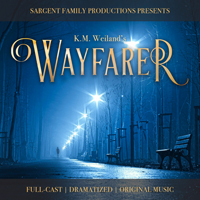
Full-Cast Audio Dramatization of Wayfarer (affiliate link)
Occasionally, I will also participate in sales with partners. This might either be a sale of my own product on another venue (such as the full-cast audio dramatization of my gaslamp fantasy Wayfarer) or a collaborative sale in which multiple authors mark down their books and mutually promote.
Other sales are more random, such as the occasional one-day $.99 e-book discount on Amazon. I will often run at least one of these a few months after a book launch in order to encourage Amazon sales with the potential to garner a “Verified Review” status from anyone willing to leave a rating or a review for the book.
Products I Use:
Online Store: Payhip6. Social MediaI have maintained a presence on all of the major social media networks for most of my career. Although I believe social media was helpful in the beginning for driving initial traffic to my site, I don’t currently feel I get a ton of leads from social media. I’ve considered dropping them altogether, but in light of the fact that they don’t require much time or effort, I’ve continued. These days, I give most of my attention to Instagram, just because I enjoy it the most. It’s easy enough to cross-promote from there on Facebook and X. Pinterest is a surprisingly big driver of traffic for me, so I always create a pinnable image to put at the top of each post.
I’m not too impulsive when it comes to social media. I set up routine posts, schedule them at the beginning of the week, and let them run. Once again, I try to focus on offering as much, if not more, free content than I do “asks.” I create various posts with excerpts from my weekly blog content, BTS from my own life (which are always the most popular), and one weekly “ad” that mentions one of my books or products.
Products I UseGraphic Design Creation: CanvaSocial Media Scheduling: Buffer***
Marketing is an incredibly vast topic, not least because it is ever-evolving as the tech changes so rapidly. It is not a natural landing spot for most writers, but it is essential for anyone who wants to get their books out there. Particularly if you seek to make a living from your writing, you will have to treat the business aspect as a business.
Start by studying what other successful writers are doing and particularly what marketing tactics resonate with you as a customer. Then get in touch with your values around marketing. What kind of marketing feels good? What are tactics and techniques that feel sustainable? Not all of them will be fun or easy. You will likely feel resistance. But as you grow as a marketer, you will get more in touch with which approaches light you up. Ultimately, marketing is really just passionately talking about something you want to share with others. Yes, you want (and deserve) to be paid for your gifts, but what you are offering is your gift to the world. That’s always going to be worth marketing.
Wordplayers, tell me your opinions! What has been your greatest breakthrough in learning how to market a book? Tell me in the comments!Click the “Play” button to Listen to Audio Version (or subscribe to the Helping Writers Become Authors podcast in Apple Podcast or Amazon Music).
___
Love Helping Writers Become Authors? You can now become a patron. (Huge thanks to those of you who are already part of my Patreon family!)The post How to Market a Book: 6 Steps From a Full-Time Author appeared first on Helping Writers Become Authors.
December 4, 2023
Gift Guide: 10 Digital Christmas Gifts for Writers
 Writing is a journey, and every writer deserves tools that turn their literary dreams into reality. Whether you’re shopping for a seasoned novelist or an aspiring wordsmith (or yourself!), these ten digital Christmas gifts for writers will inspire, empower, and elevate their craft to new heights. These are all products I use myself (or created) and have found of great help in my own writing and publishing journey.
Writing is a journey, and every writer deserves tools that turn their literary dreams into reality. Whether you’re shopping for a seasoned novelist or an aspiring wordsmith (or yourself!), these ten digital Christmas gifts for writers will inspire, empower, and elevate their craft to new heights. These are all products I use myself (or created) and have found of great help in my own writing and publishing journey.

In the vast universe of self-publishing, discover the guiding star that is Publisher Rocket. This powerhouse tool unveils the secret sauce of successful book launches by helping authors research keywords, competitor analysis, and market trends. Perfect for authors navigating the intricate galaxy of online publishing, Publisher Rocket propels their work into the hands of eager readers.
>>Read more about Publisher Rocket in this post.
2. Scrivener: Word Processor ($60)For writers seeking an all-in-one masterpiece, Scrivener is the architect’s blueprint for crafting novels, essays, or any written endeavor. Organize ideas, outline chapters, and seamlessly navigate the writing process with this robust software. Scrivener’s flexibility adapts to the unique needs of each writer, making it a vital companion for anyone serious about their craft. Even after all these years, this remains my go-to and favorite tool for writing organization. It does it all.
>>Read more about Scrivener in this post.
3. Atticus: Word Processor ($147)

Say goodbye to distractions and hello to Atticus, the minimalist writing tool designed to foster creativity without the noise. With a clean interface and customizable features, Atticus allows writers to immerse themselves in their work. Distill ideas, polish prose, and let the words flow seamlessly with this digital sanctuary for focused minds. Although I still use Scrivener for most of my workload, I am particularly interested in Atticus’s capabilities for converting to e-book formats such as epub.
4. Damonza (~$645) and Ebook Launch (~$500): Book Cover Designers
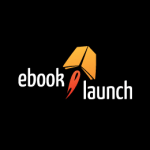
They say not to judge a book by its cover, but in a crowded market, a captivating design can make all the difference. Gift the writer in your life a professional touch with the two book cover designers I have enjoyed working with, Damonza or Ebooklaunch. These services offer stellar book cover design and formatting, ensuring their literary creation stands out on the digital shelves.
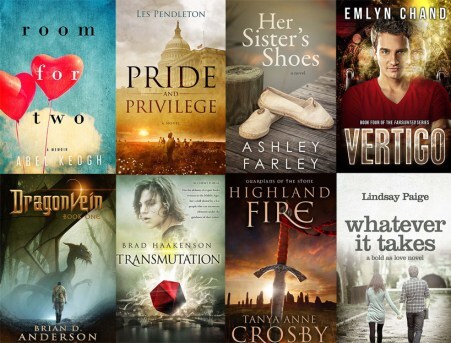
>>Read more about Damonza and Ebook Launch in this post.
5. Midjourney: Image Generator ($10 a month)

Midjourney is a fun playground for generating images for inspiration and more. I’ve been playing with it throughout the year and have found it uncanny for creating story-inspiring images based on prompts from the books I’m working on.
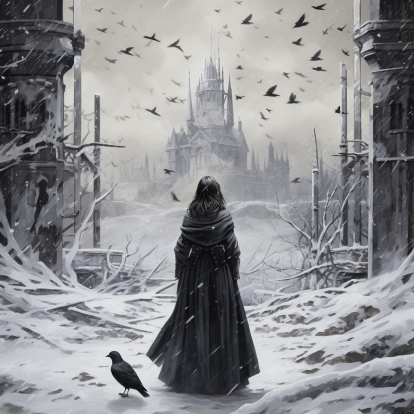
A Midjourney rendering of my initial image of inspiration for my WIP Wildblood.
6. Grammarly (~$12 a month) or ProWritingAid (~$30 a month): Spelling and Grammar Checkers
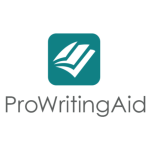
In the realm of polished prose, Grammarly and ProWritingAid wield the mighty sword of language perfection. These digital writing assistants offer more than just spell-check; they enhance writing style, correct grammar nuances, and provide detailed insights for improvement.
7. One Stop for Writers: Writing Resources and “Thesauruses” ($11 a month)
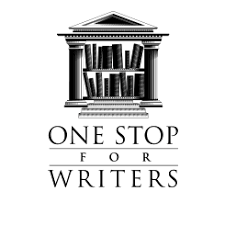
Crafting a world, building characters, and weaving intricate plots require a versatile toolkit. One Stop for Writers is the ultimate resource hub, offering a treasure trove of tools for writers. From character development to story mapping, this digital oasis empowers writers to enrich their narratives and bring their creative visions to life.
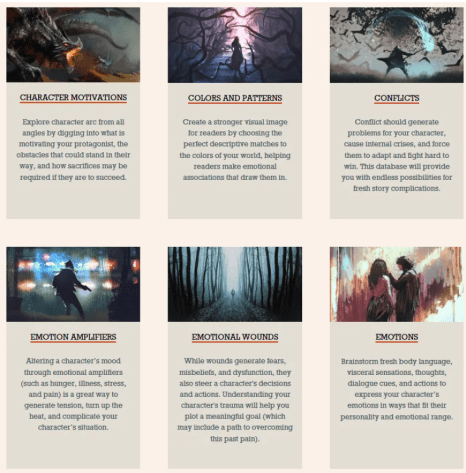
Immerse yourself in the minds of your characters with Archetypal Character Guided Meditations based on my book Writing Archetypal Character Arcs. These six guided mediations offer a unique experience, allowing writers to delve into the psyches of their creations. Unlocking motivations, fears, and desires, this digital gift transforms the writing process by fostering a deeper connection between the writer and their characters.
9. Outlining Your Novel Workbook Software: Plotting App ($40)Take the chaos out of plotting with the Outlining Your Novel Workbook Software (based on my book of the same name). This digital tool transforms the art of outlining, helping writers build a solid foundation for their stories. Seamlessly integrated into the writing process, this software ensures that every twist and turn in the plot aligns with the grand design, resulting in narratives that captivate from beginning to end.
10. Creating Character Arcs Course: Writing Instruction ($99)Character development is the beating heart of storytelling. My Creating Character Arcs Course (based on the book of the same name) is a compass that guides writers through the intricate art of crafting compelling personas. With in-depth insights and practical exercises, this course empowers writers to breathe life into characters that resonate with readers long after the final page.
Choosing the Perfect Christmas Gifts for WritersSelecting the ideal digital Christmas gifts for the writers in your life depends on their unique odyssey. Consider their preferences, aspirations, and the stage of their writing journey. For the budding novelist, tools like Atticus or my Outlining Your Novel Workbook Software can provide invaluable support. Established authors may benefit from book design services like Damonza and Ebooklaunch to enhance their book’s visual appeal.
If your writer is on a quest for community, Midjourney opens the doors to collaboration and shared creativity. For those seeking self-improvement, Grammarly or ProWritingAid act as trusty companions in refining writing skills. And, of course, every writer can benefit from learning new techniques and understandings of story, as in books and courses.
In the digital age, the gift of creativity is just a click away. These ten digital gifts for writers offer tools that nurture literary dreams and empower writers to forge their own literary destinies. As you embark on this gift-giving journey, remember that each choice brings the recipient one step closer to realizing their literary ambitions. Happy gifting, and may the words flow ever in their favor!
Check Out Previous Years’ Gift Lists Here:
17 Eco-Friendly Gifts for Writers This Christmas10 Best Books to Buy a Writer For ChristmasThe Best Christmas Gifts This Writer Has Ever ReceivedWordplayers, tell me your opinions! What digital Christmas gifts for writers are on your list this year? Tell me in the comments!The post Gift Guide: 10 Digital Christmas Gifts for Writers appeared first on Helping Writers Become Authors.
November 27, 2023
14 Do’s and Don’ts of Time Management for Writers (from a Recovering Over-Achiever)
 For many of us, writing is one of the most important things in our lives. And yet, it can be all too easy to let that “most important thing” end up at the bottom of our to-do list. If yet another day has passed in which you haven’t been able to write—or a day in which you did write but getting it done was a struggle—you’re not alone. Time management for writers is possibly one of the key skills of the lifestyle. This is true whether you write full-time or write around your full-time responsibilities.
For many of us, writing is one of the most important things in our lives. And yet, it can be all too easy to let that “most important thing” end up at the bottom of our to-do list. If yet another day has passed in which you haven’t been able to write—or a day in which you did write but getting it done was a struggle—you’re not alone. Time management for writers is possibly one of the key skills of the lifestyle. This is true whether you write full-time or write around your full-time responsibilities.
I’ve always been a schedule hacker and someone who tries to make every minute count. I’ve also always been someone who constantly laments that there isn’t just one more hour in the day. Time management is something of an obsession for me, probably because it’s a game you never completely win. In years past, I’ve gone down the overachiever path of absolutely flying through my days and trying to cram in as much as possible. There are seasons in which that is effective or even unavoidable, but eventually it becomes unsustainable. I’ve also gone through seasons in which circumstances dictated I do as little as possible, but that too is unsustainable over the long term.
Inevitably, the sweet spot is found in balance. Each person’s balance is different, depending on personality, health, goals, obligations, and other factors. No matter what your lifestyle, the demands of the modern day keep us busy and distracted. This can be especially challenging for a creative who needs downtime to breathe and think and wander, as well as concentrated go-time in which to enforce discipline and actually get words on paper.
Recently, I received the following question from reader Joan Arc:
I enjoy reading your blog posts and I like the fact that you like suggestions from your fellow writers. But as I am engaged in school and trying to balance life whilst I study, I find it is becoming more difficult to devote the time to read them. I was wondering if in the near future, you could give some helpful hints about time management and how to balance a writing schedule that will stay even when life takes priority. This is a thing that I, along with many aspiring writers struggle with, and consequently, I lose inspiration for my book. Do you have any suggestions for this?
In today’s post, I’m going to review some of the do’s and don’ts of time management that I have found most supportive throughout my writing career. First, however, I will say a word about consistency in general. I’ve written before about the pros and cons of writing every day, ultimately landing on the view that it’s not important that you write “every” day. What is important is consistency—whatever that means to you—since consistency is what staves off that loss of inspiration Joan references.
8 Do’s of Time Management for WritersThe following eight “do’s” of time management for writers are all practical steps to take in aligning your daily schedule to your vision for your writing life. Note, that it’s important to start with your vision. Start by getting clear on your own goals, not just for writing but for other areas of your life as well. This will help you identify your ideal schedule, as well as what is achievable at the moment.
1. List Your To-Dos So You Can See Them All in One PlaceIf your day is anything like mine, then it is made up of a bazillion little to-dos. Many of them are so infinitesimal (emptying comment spam on the website) or ordinary (brushing my teeth) that I don’t always think of them as “to-dos.” And yet, they add up fast. When trying to get clear about how to streamline your schedule and create flow states throughout your day, take the time to analyze everything. Time management for writers isn’t just about writing. It isn’t even mostly about writing. It’s about optimizing the entire day so the writing time comes as easily as possible.
2. Create “Batches” of Related TasksOnce you’ve created a list, group your tasks thematically. A personal motto that serves me well in some instances and not so well in others is “do whatever is in front of you.” Sometimes this is the single best method for moving forward through a large task or for creating momentum when you feel stuck. Other times, it just ends up scattering your focus all over the place. Instead of eating the elephant one bite at a time, you eat a little of the elephant and a little of the giraffe and a little of the hyena—and you end the day feeling you haven’t accomplished anything.
Batch your tasks, so you can focus on one thing at a time. For example, don’t check email throughout the day. Reserve a slot at an optimal time of the day when you can sort through and respond to all emails at once.
3. Multi-Task (With Care)Multi-tasking is a double-edged sword. On the one hand, it can undeniably help you move through multiple projects at a quicker rate. On the other hand, the growing amount of research on the loss of productivity associated with multi-tasking is sobering. Even though all that busyness can make us feel super-productive, the actual metrics don’t always weigh out. Use caution and consciousness when adding multi-tasking to your schedule.
That said, there are times when multi-tasking takes everything to 2.0. For example, you might plan to listen to an audiobook or podcast whenever your hands are busy elsewhere (e.g., commuting, doing the dishes, or, for me, designing weekly social media graphics such as the Pinterest image at the top of my posts).
4. Schedule Downtime RelentlesslyWhen we think of time management for writers, what usually comes to mind are all the tasks we want to do. But particularly if you’re wanting or needing to cram a lot into your daily routines, one of the most important things you can schedule is downtime. Make downtime your priority. Except in situations in which you have no choice (e.g., your paycheck is on the line, your child has an emergency, etc.), the downtime on your schedule should be the last thing to take the hit. I’ve learned this the hard way. These days, I adamantly schedule “downtime” and self-care first thing in the morning. If I don’t do it first, I don’t do it, and because it is the most important part of my day, I prioritize it relentlessly.
5. Make a Commitment With YourselfMaking schedules is the easy part; sticking with them is where the road can get rough. There are two key pieces to sticking with a schedule. The first key is creating a schedule that works. This often requires trial and error, some degree of flexibility, and self-forgiveness.
The second key is discipline. Think of your schedule as a commitment to yourself. Not only are you committing to do all the tasks you’ve laid out for yourself, but when you show up to one of those tasks, you’re going to give it your full attention. This is true for every task on your list, but as a writer, it’s the writing time that should be particularly sacred.
It can be so easy to carve out an hour or two in your day for writing… and then spend half or more of that time twiddling it away. Now, sometimes twiddling is really just creative lollygagging or even dreamzoning, both of which are part of the creative process. But other times (and you know when those times are), the twiddling is just procrastination.
6. Schedule Writing Tasks and Writing-Related Tasks SeparatelyPeople often ask me if outlining, researching, and editing count as “writing time.” In my view, they do. However, when it comes to time management for writers, it can be valuable to schedule them separately. Depending on your preferences, the temptation to do a little of everything during “writing time” may end up being counter-productive. For example, if I’m trying to get myself into the headspace of flowing with a scene I want to write, I don’t want to interrupt that with the sudden urge to go research some tidbit. I try to schedule myself out of my distractions by penciling in a slot for researching or editing or whatever else at a different time from my writing.
7. Create a Quick Warm-Up RoutineAfter zooming through all the to-dos that fill the rest of your day, it can be tough to sit down at your desk and suddenly turn on your inspiration and creativity. And yet, you only have an hour, and you can’t afford to waste any of it!
One of the best tricks I’ve ever used for transitioning into my writing time is a personalized warm-up routine. At certain times in my life (when I’ve had more time), I’ve scheduled warm-ups as long as 30 minutes. These days, my warm-ups are usually quite short. I choose tasks that help ground me, pull me out of a mental space and into my deeper, body-oriented imagination—such as a quick grounding meditation, lighting a candle, breathing some essential oils, or taking a bite of chocolate or a sip of coffee. I may also read over what I wrote the day before or read a quick section from my research or character notes, to help pull myself back into the mindset of my story.
8. Write in Fifteen-Minute SpurtsThere you are, sitting at your desk right on schedule, ready to write. And… the words just aren’t coming. The urge to twiddle is strong. You look at the clock and suddenly this precious hour seems like for…ev…er. Before you know it, fifteen minutes have passed and you’ve rewritten the same sentence a total of three times.
The brain hack I like to use is writing in fifteen-minute spurts. I tell myself I’m going to write 500 words (or whatever) in fifteen minutes. Writing 2,000 words in an hour seems overwhelming, but 500 in fifteen minutes? I can do that! Then… when the fifteen minutes is up, I take another drink of coffee or a bite of chocolate, and do it again.
6 Don’ts of Time Management for Writers1. Don’t Create a Unrealistic ScheduleOne of the chief reasons people struggle with time management is that they set unrealistic schedules. I get it. There is just so much we need to do in a day, on top of everything we want to do. Except in rare circumstances, we simply can’t do it all. The key to success with scheduling is to get realistic on what is actually feasible and sustainable—and enjoyable. This requires that you know your own energy: how much you have, when it peaks and ebbs, etc.
To the degree you require cooperation, you also need to understand other people’s energy and to work around it when necessary. It’s one thing to create the kind of schedule that might work on an ideal day, and another to create a schedule rugged enough to flex around the demands of life, including relationships and holidays.
You also need to be realistic about how long your writing time should actually be. What fits into your day—and your energetic limitations—in a way that nurtures your creativity rather than stressing you out?
2. Don’t Dismiss Your True PrioritiesSuccessful time management is about scheduling the big stuff first. What’s “big” for you will be entirely personal. This might be your job; it might be your kids; it might be writing; it might be self-care. Get real with yourself about your true priorities. Sometimes our priorities aren’t always what we think they are or even what we want them to be. If you’re struggling to make time for your writing, it may be because writing is not currently your top priority. There is nothing wrong with this. However, the struggle could also be because your schedule is currently arranged around something that really isn’t a priority. Get real with yourself, and when you do identify your top priorities—whatever they are in this season of your life—honor them.
3. Don’t Guilt Yourself When You Don’t Get It All DoneSchedules are there to serve you. You are not in service to the schedule.
Let me say that again: Schedules are there to serve you. You are not in service to the schedule.
Rewriting this pattern is a challenge for many of us. When we set up schedules and (inevitably) fail to adhere to them perfectly, we can sometimes experience an unrealistic amount of guilt or even shame for our “failure.” For schedules or time-management tools of any sort to be effective, they need to help us and not hurt us. Rewriting your schedule into a routine that is realistic for your lifestyle is a good start. But if you ever feel beleaguered by your to-do list, make space to work with and heal those old patterns.
4. Don’t Say “Yes” When You Want to Say “No”Something I was told early in my career was “say yes to everything.” Although that mindset certainly allowed me to take advantage of many opportunities, it is ultimately a perspective I have happily hurled into the trash bin. Learning to say “no” can be a long journey for many of us (especially women), but it is the foundation of a successful schedule. Ultimately, this is the same thing as getting super-clear on your own priorities. If you truly want to hold authority over your own time, then don’t schedule what isn’t true for you. And don’t change your schedule later on because you feel obligated to say “yes” to something when you’re really a “no.”
5. Don’t Let Others Disrespect Your Writing TimeAlong with being able to say “no” comes the skill of creating boundaries around your schedule, particularly around your writing time. Although there will, of course, be times when flexibility is important, start creating the habit of expecting that others will honor the commitments you’ve made for yourself throughout your day. Ultimately, this is about nothing more or less than you radically honoring those commitments yourself. I realized very early in my career that if I didn’t respect my writing time, no one else would do it for me.
6. Don’t Constantly Check Email and NotificationsFinally, just say no to the notifications. Internet brain is a real thing. Largely, it is inescapable, but you can manage it. Minimize email and phone notifications to whatever degree is feasible in your life. The only push notifications I allow on my phone are texts and appointment reminders. I don’t allow notifications for email, blog comments, social media, apps, or anything else. I schedule times in my day to manually check all of those (an example of “batching” from “Do” #2, above), so that my attention is not fragmented throughout the day and I’m not tempted to detour off my schedule for who knows how long. More than that, I keep my phone in airplane mode most of the time and check it purposefully a couple times throughout the day so that my interactions are at my discretion rather than the other way around.
***
Time management for writers can make all the difference not just in how productive we actually are but in how fulfilled we feel at the end of the day. Learning to create realistic goals, to schedule tasks to match our energy flow, to make plans to control and avoid unnecessary distractions, and to create flexibility and grace within ourselves for when things inevitably don’t go according to plan—these are all skills that greatly enhance the quality of our lives and our writing.
Wordplayers, tell me your opinions! What have you found is the most helpful tip in time management for writers? Tell me in the comments!Click the “Play” button to Listen to Audio Version (or subscribe to the Helping Writers Become Authors podcast in Apple Podcast or Amazon Music).
___
Love Helping Writers Become Authors? You can now become a patron. (Huge thanks to those of you who are already part of my Patreon family!)The post 14 Do’s and Don’ts of Time Management for Writers (from a Recovering Over-Achiever) appeared first on Helping Writers Become Authors.


